If you follow the right formula to earn backlinks, you can massively improve your website's rankings and authority.
But low-quality backlinks can damage your rankings and reputation.
The most impactful backlinks are:
Editorially earned From a relevant, authoritative website Not paid for or sponsoredIn this article, we’ll cover 11 ways to get quality backlinks, regardless of your industry.
1. Digital PR
Digital PR consists of creating linkable assets and promoting them to relevant journalists and publications. If done well, it can be a scalable way to earn backlinks.
But keep in mind that you’ll need to create assets that publications want to link to.
Some common examples include:
Data-driven studies In-depth, long-form guides Infographics and visualsIf you create a resource that’s in-depth, compelling, and accurate, people will naturally cite you as a source.
The best part is that these links are editorially-placed, which Google prefers.
And John Mueller, Search Advocate at Google, states that digital PR is “just as critical as tech SEO.”

As a case study, let’s use our blog post on the 100 most visited sites:
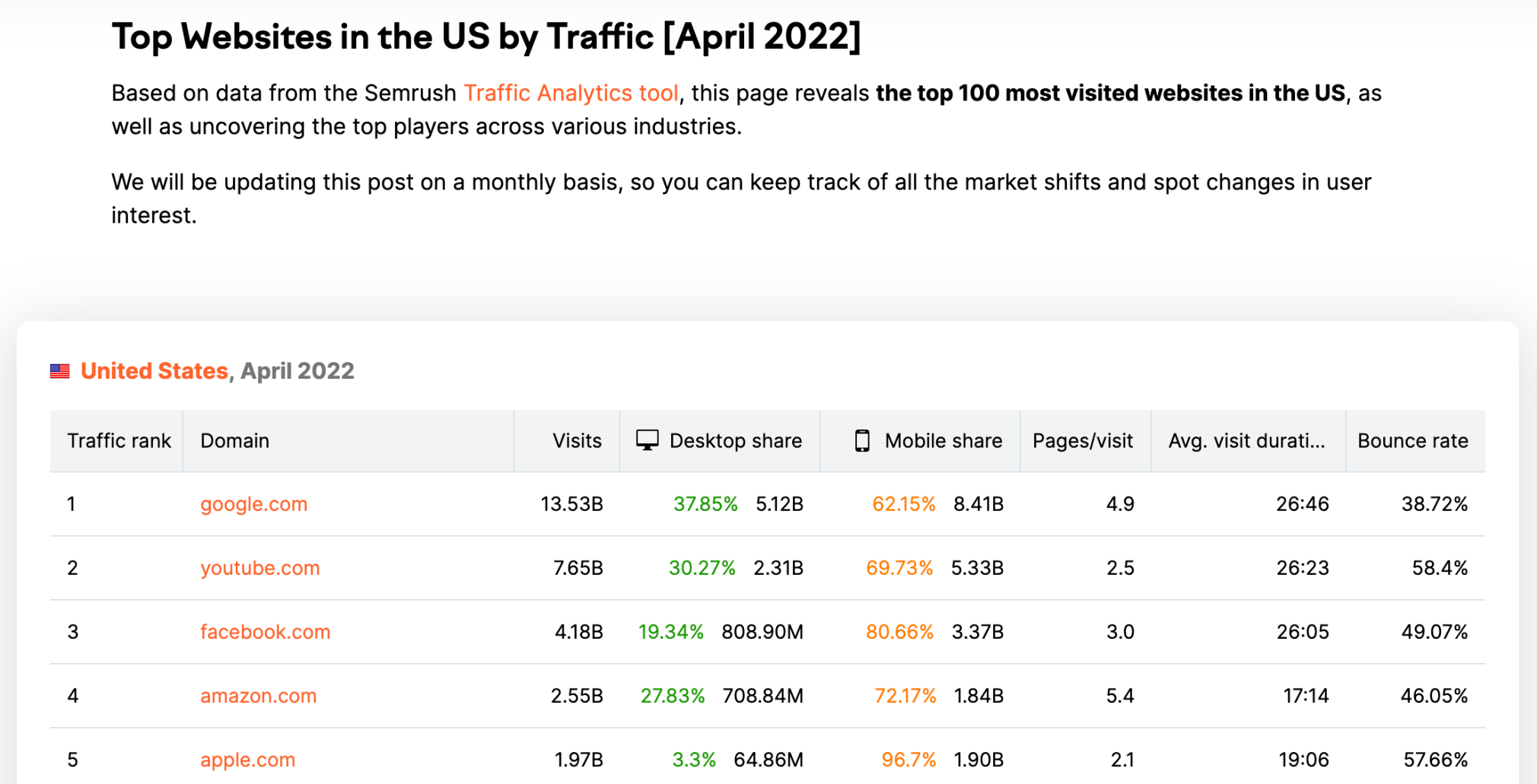
To create this post, we first did keyword research to find a high-volume keyword. “Most visited websites” has a US search volume of 4.4k and a global search volume of 11.9k.
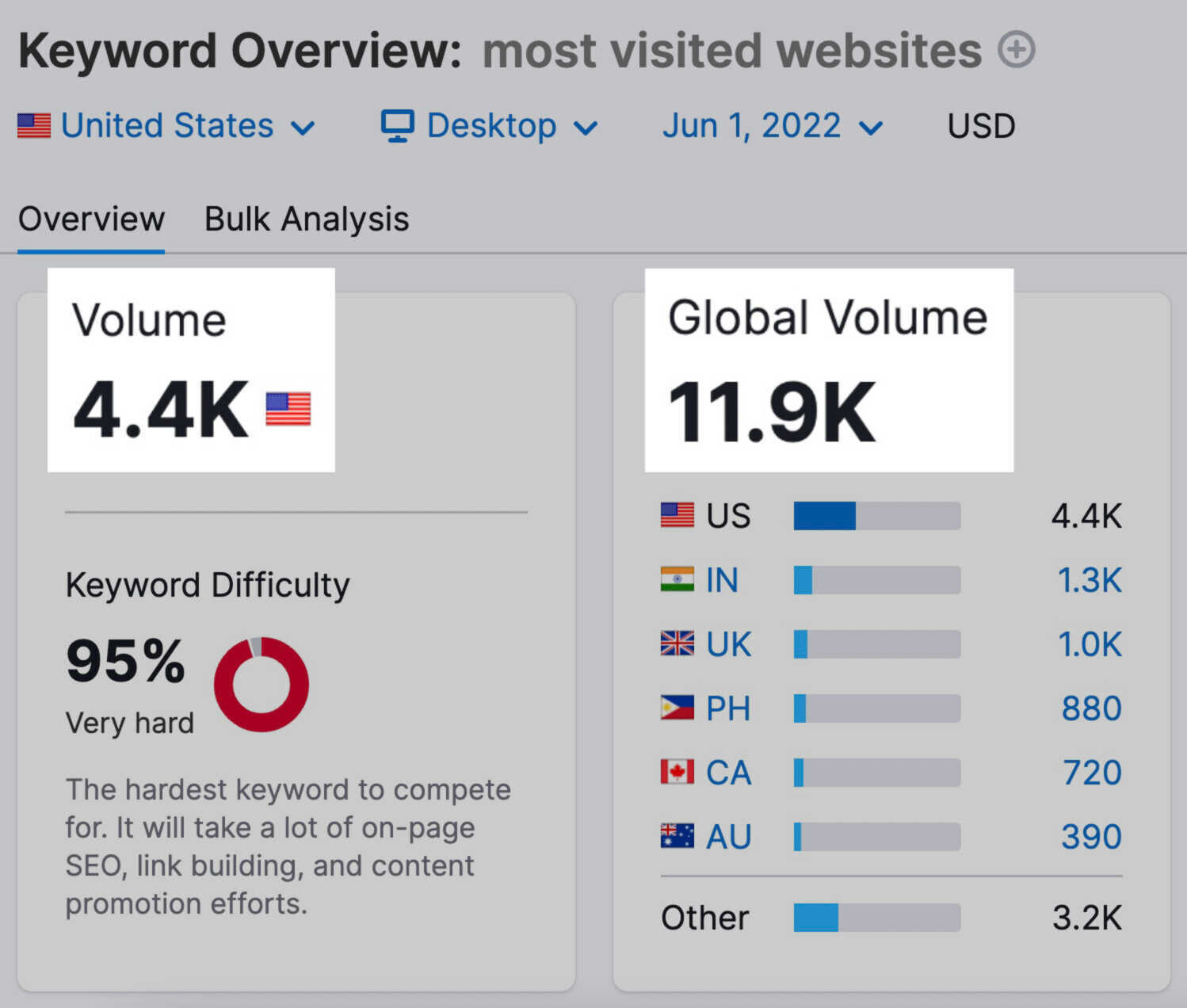
The goal was to create something that journalists would use and link to from their articles. To do this, we included the right data from our tools and designed a post that would make a good resource relevant to many industries.
Here’s the section on Education:
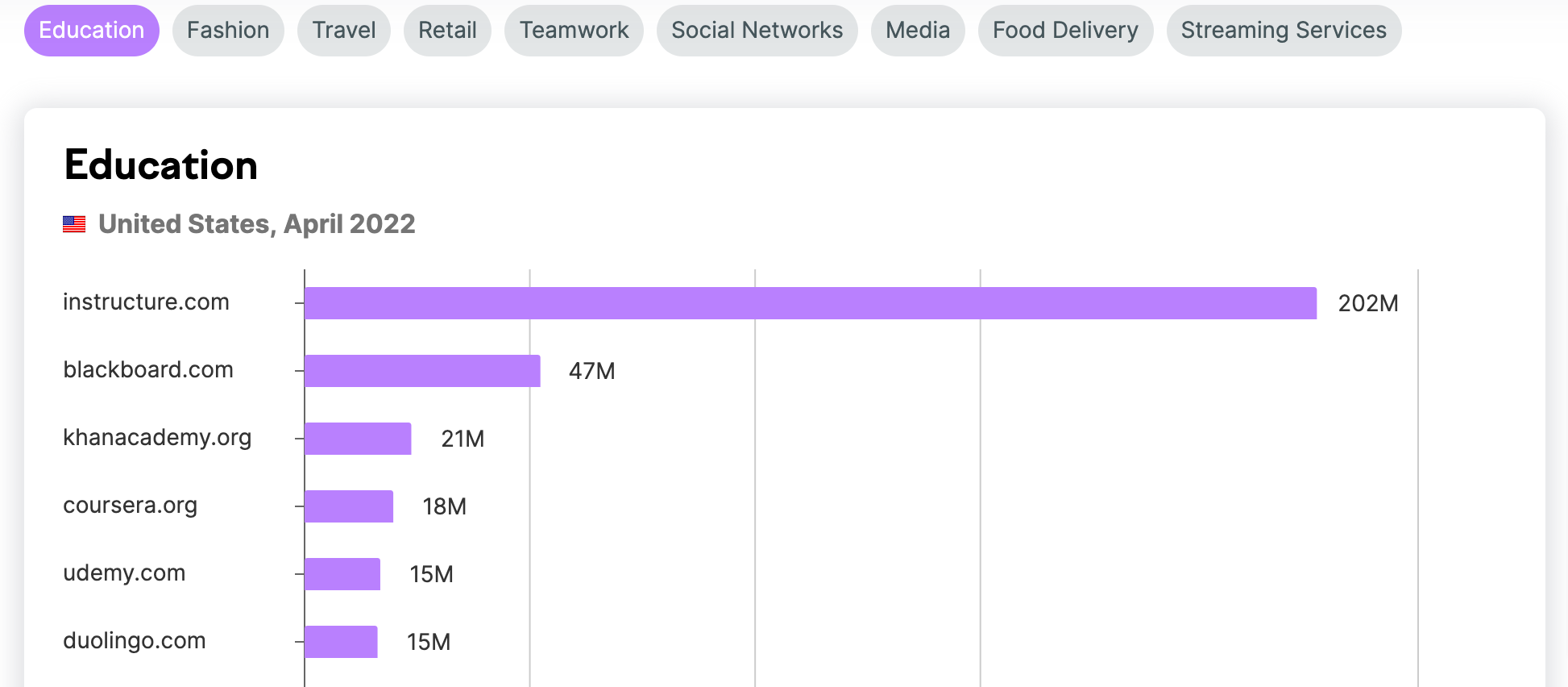
To sum things up, we made a resource that is frequently updated, visually easy to understand, and relevant to many industries.
And as a result, our blog post has over 12.3k backlinks from over 847 referring domains.

This includes backlinks from the likes of Time, Glamour, Hubspot, and more.
2. Resource Link Building
One of the most effective—and simple—ways to get backlinks is with resource link building.
Resource pages are curated lists of links (i.e., resources).
There are resource pages for pretty much any topic you can think of.
Like:
Resources for learning SEO Information for dog trainers Sites for career planningLet’s look at the career planning resource from the above list as an example.
Here’s what the resource page looks like. It’s filled with links to other websites that help people plan their careers in different industries:
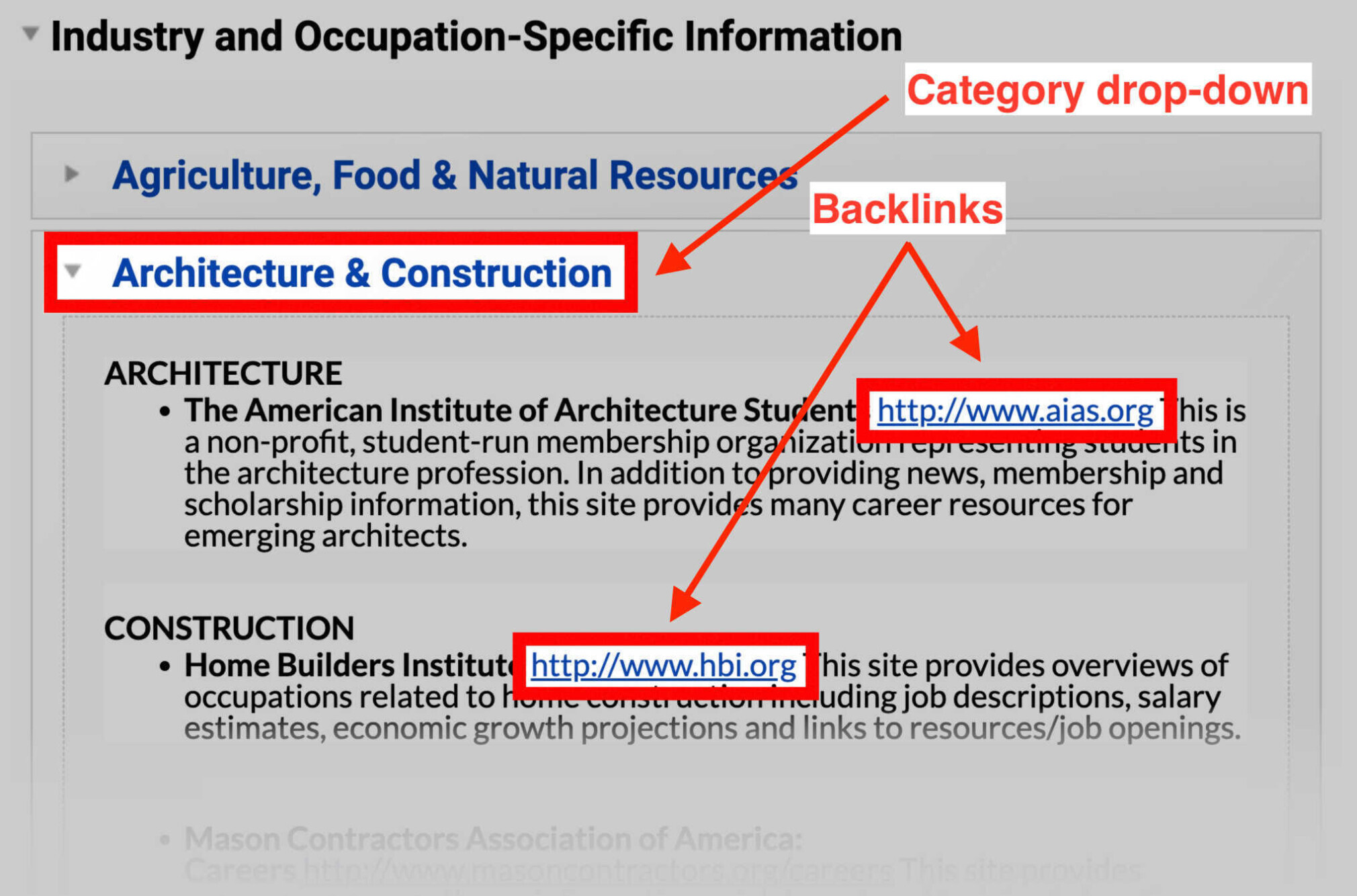
To get your website listed on this page, all you’d need to do is fill out this form:

Voila: with only five minutes of work, you could get a valuable backlink.
You can find more resource page opportunities by looking at which pages already link to your competitors.
Here’s how to do that with the Semrush Backlink Analytics Tool.
First, click on the Backlink Analytics tool in the “Link Building” section of the navigation sidebar.
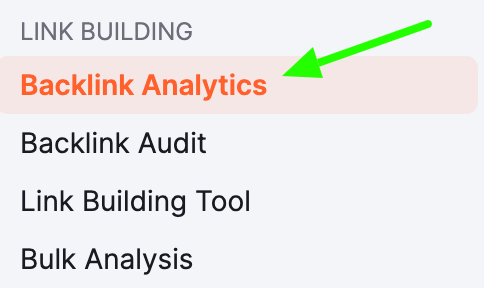
Enter the competitor’s URL you’d like to review, and click “Analyze.”

Next, navigate to the “Backlinks” tab on the top navigation bar.
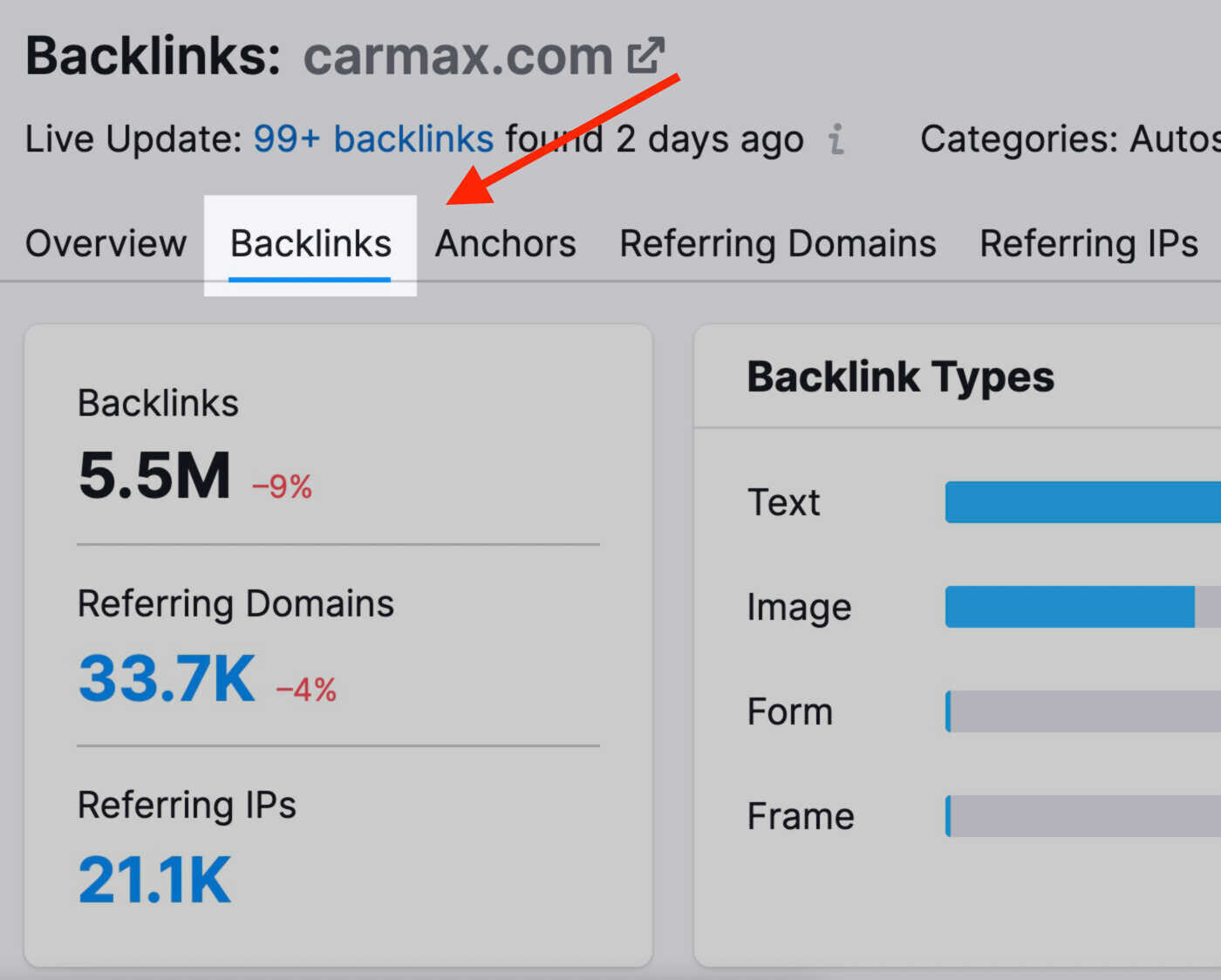
This will give you an overview of what types of backlinks a site is getting as well as a full list of them.
Now, filter the URL column by the word “resource.” This will provide you with a list of pages that link to your competitor and contain the word “resource” in the title or URL:
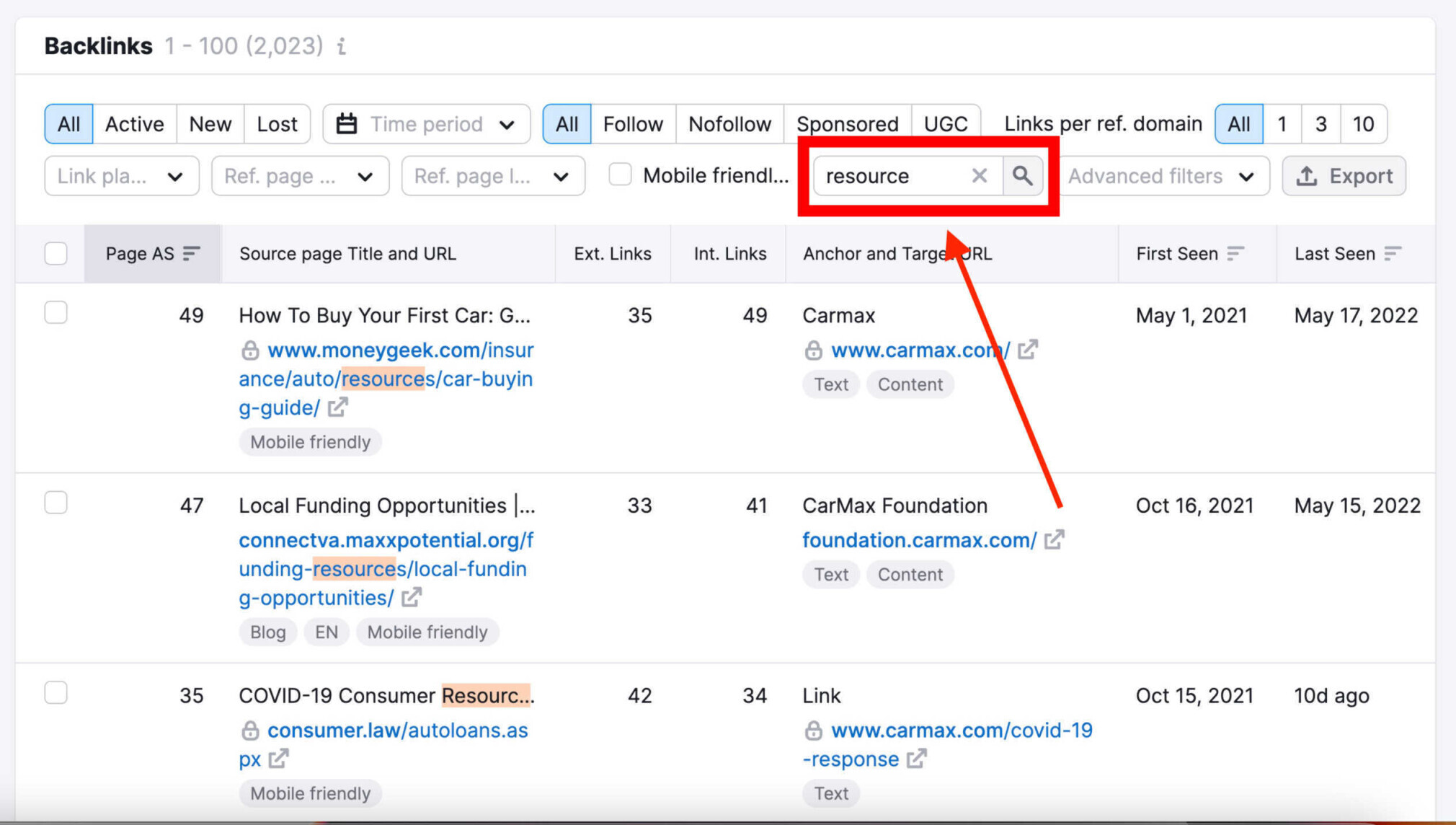
In other words, it’s a list of resource pages that already link to a site in your industry (your competitor).
Which means there’s a good chance they’ll be willing to link to your site, too.
Review the results to see if there’s a page on your site that would be a good addition to one of these resource pages. Or, if you don’t have a page currently, you can always create one.
Your last step is go through the resource pages and either submit your resource via their forms or contact the site owners directly.
3. Broken Link Building
Broken link building is the process of finding broken links on pages within your niche and reaching out to the webmaster with resources of your own to replace them with.
Here’s an example of what a user may see if they click on a broken link:
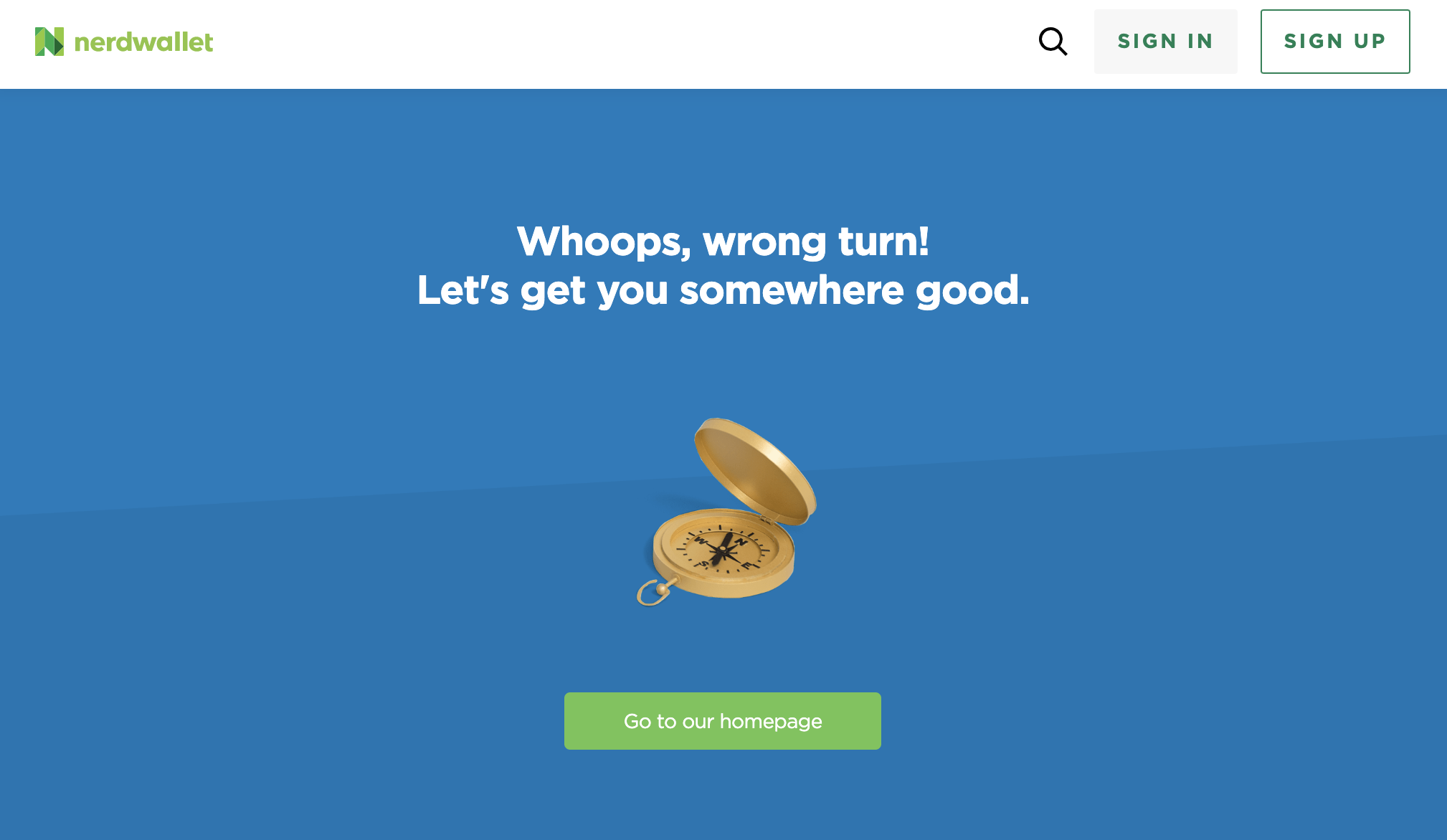
Not only is this a poor user experience, but it also makes the site owner look bad.
Broken link building is a relatively low-effort tactic that leads to a win-win situation: the site owner fixes a broken link, and you get a backlink.
Here’s how to find broken links and contact site owners with your replacement:
First, navigate to Backlink Analytics. Input a domain related to your niche and click the “Indexed Pages” tab.
For example, if your business was related to personal finance, you could look at nerdwallet.com.
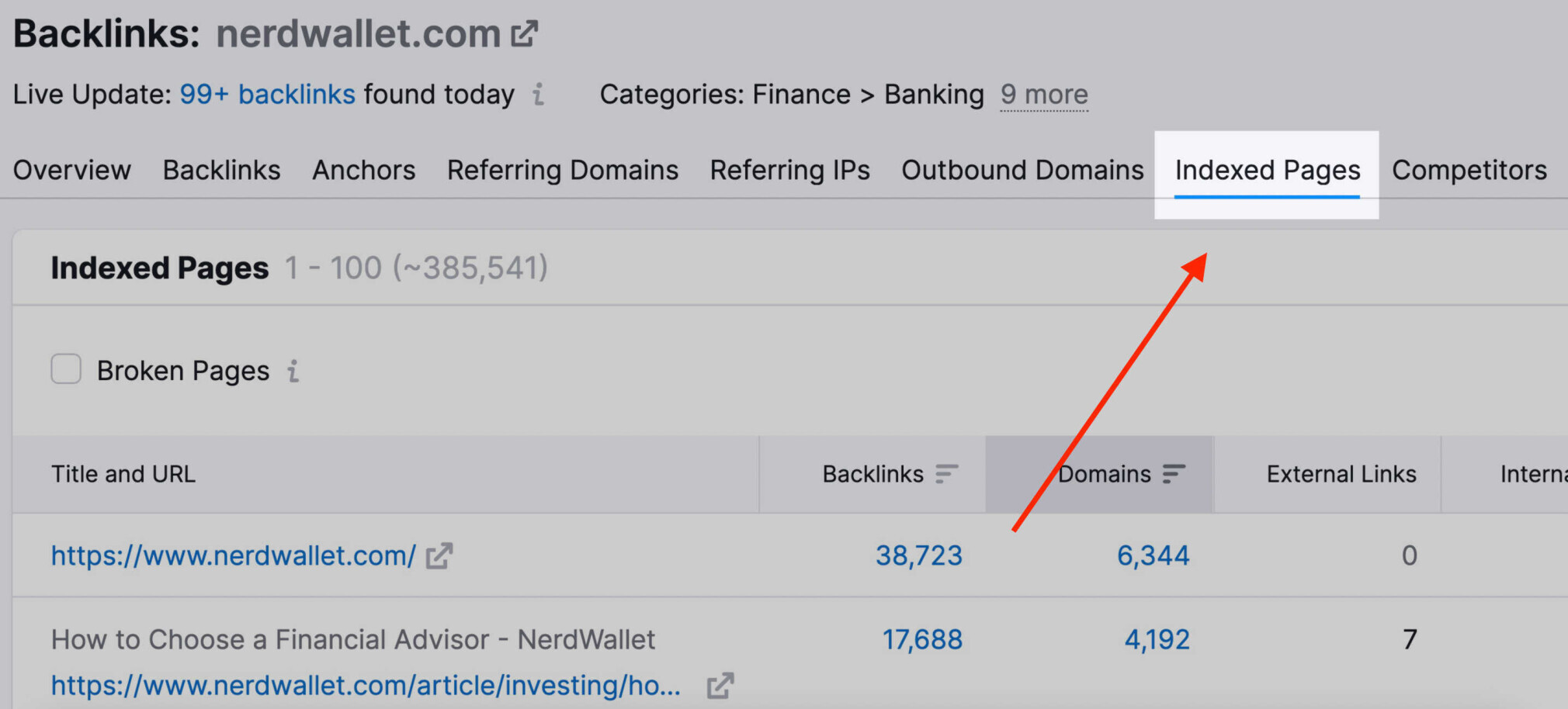
Next, check the “Broken Pages” box on the top left.
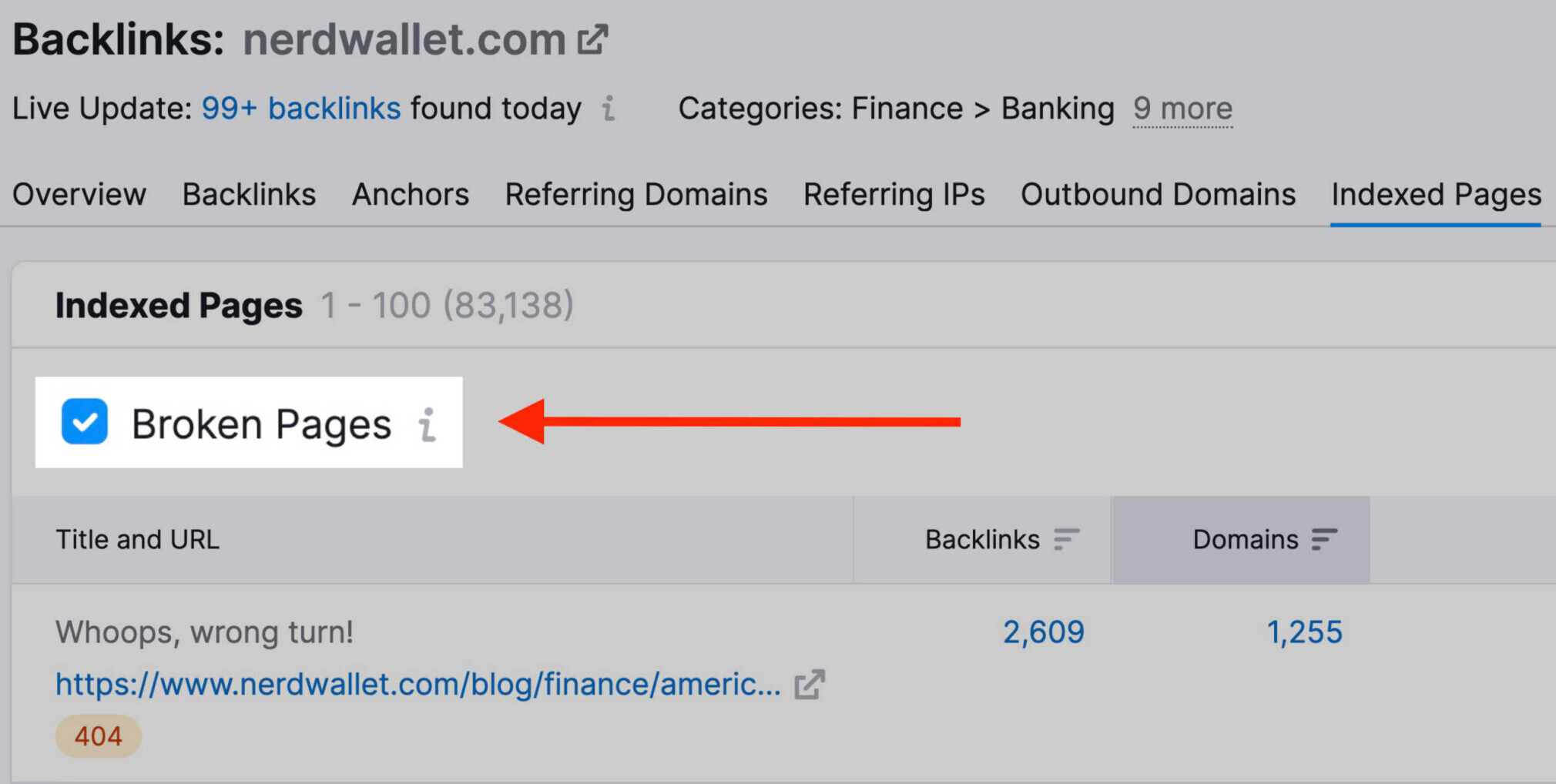
This will show any broken pages on the site.
From here, you can click the hyperlinked numbers under the “Backlinks” column to find out what sites are linking to these broken pages.
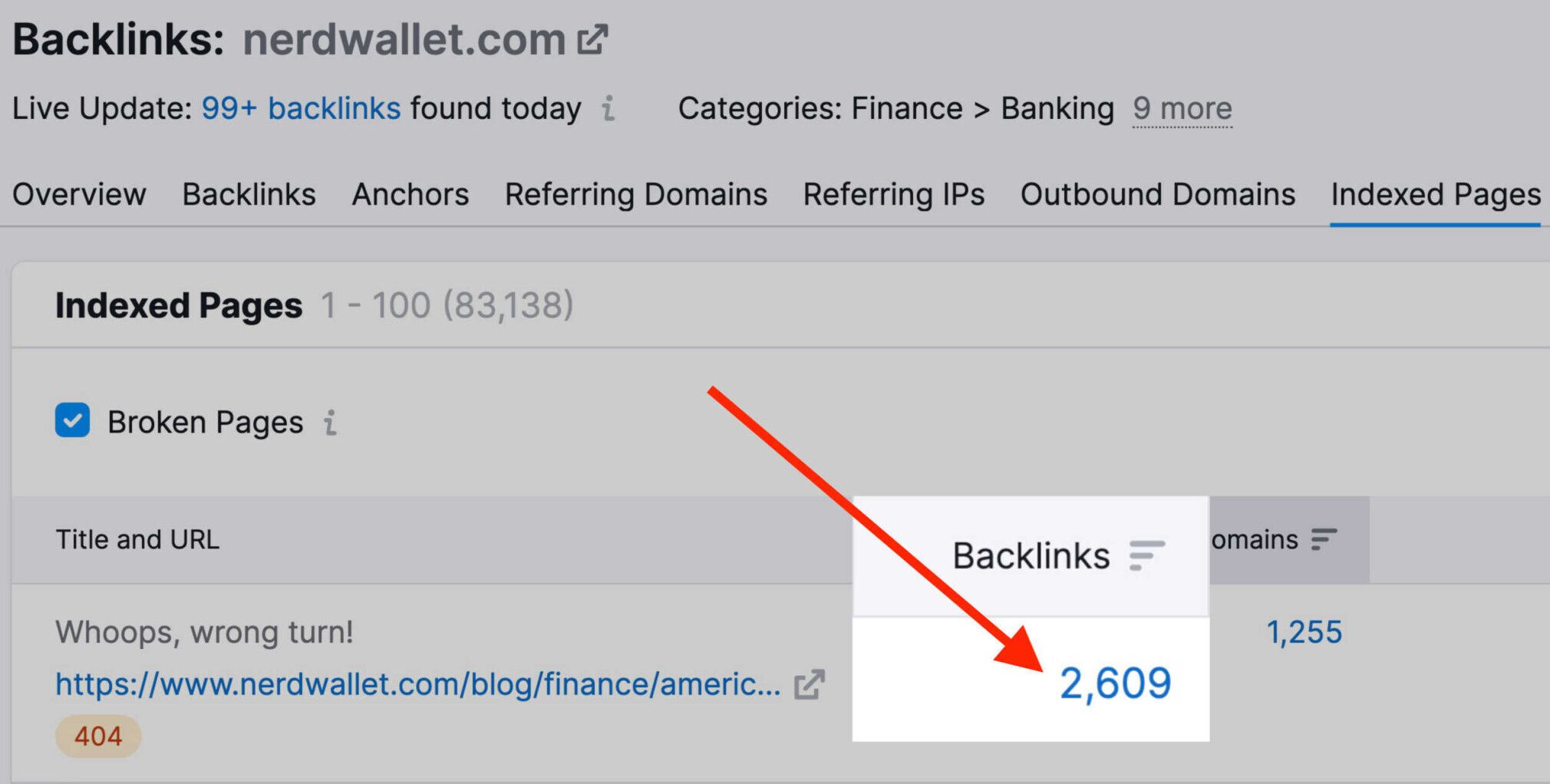
Now, look for any broken pages focused on topics that you have existing content for (or could create content about).
The second example on this list was a page about the average credit card debt in a household. It has 1,533 backlinks. Let’s run with it.
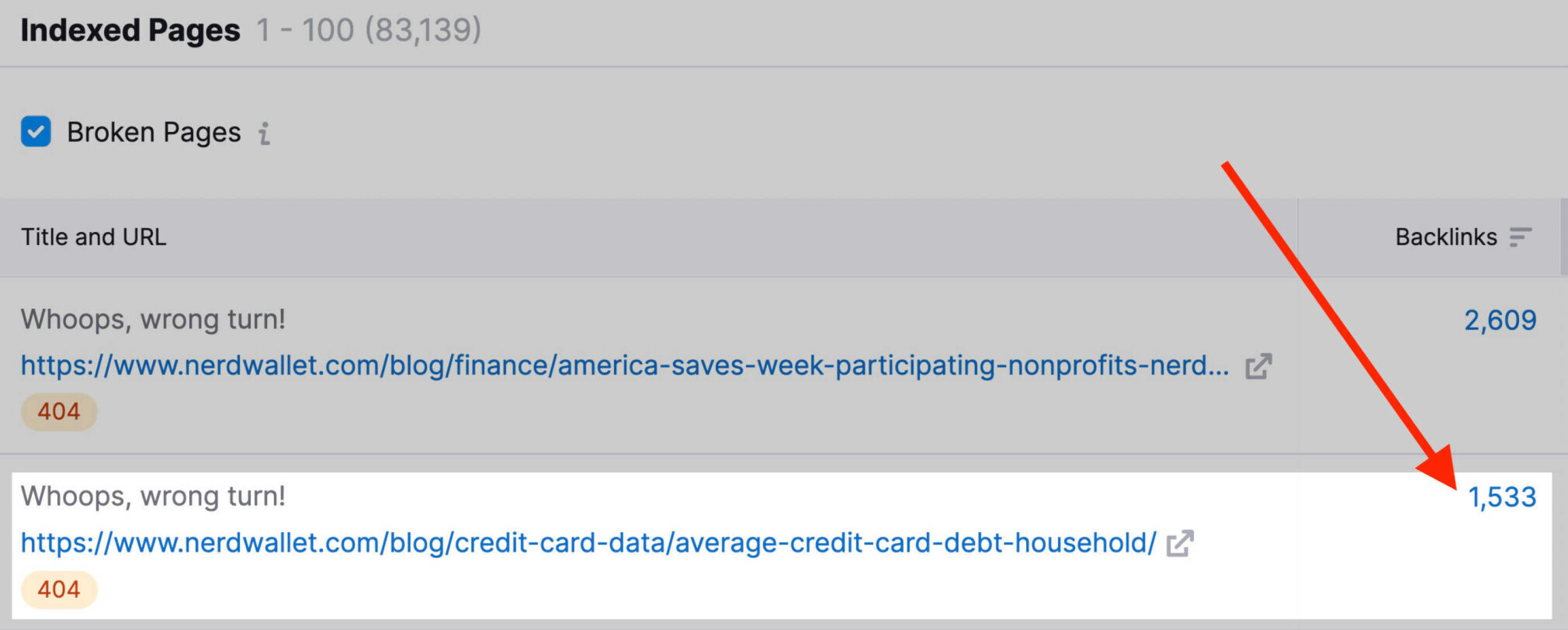
Click the number of backlinks (the “1,533” anchor text in this case).
You’ll be taken to a list of all the domains that link to the page that’s 404ing:
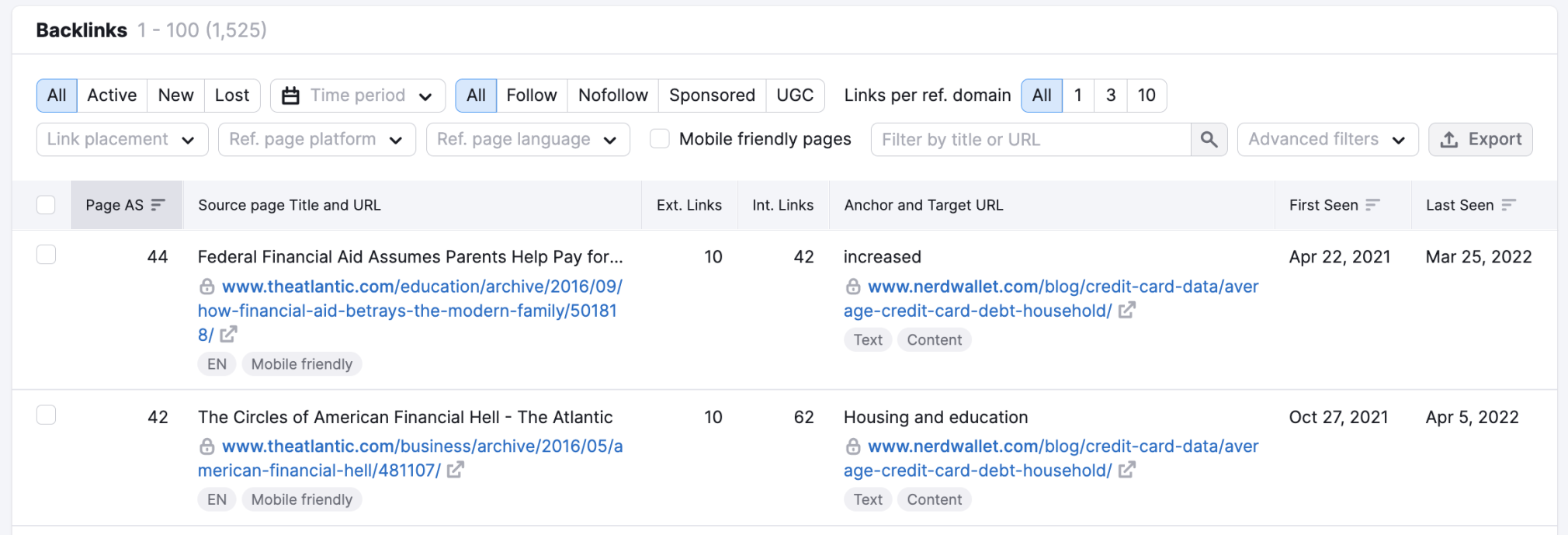
Use the filters if need be to sort through your results (e.g., type your desired keyword into the “Filter by title or URL” section at the top right of the above screenshot).
You can check the “Anchor and Target URL” column to find the page URL as well as the anchor text that the sites are using to link to the broken page.
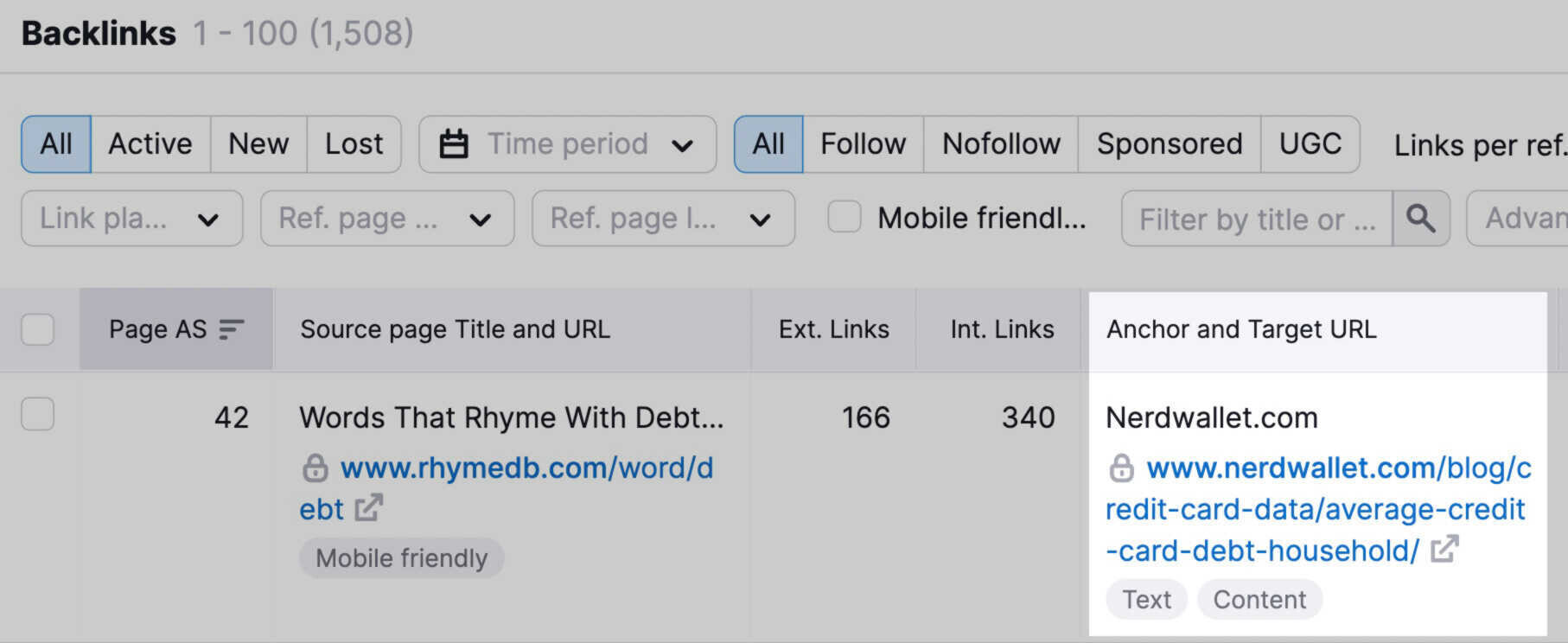
Once you’ve found a few solid opportunities like the one above:
Reach out to the site owners to inform them they are linking to a broken page; Offer an alternative page on your site that they can link to instead.To stay organized, track your progress with our Link Building Tool.
4. Unlinked Brand Mentions
It’s possible that your site is mentioned across the web—from online newspapers to product reviews to podcasts.
Ideally, these mentions link to your website. However, that’s not always the case. Hence the phrase “unlinked brand mentions.”
The good part is that people are mentioning you. So you’re halfway there. If the site already mentions your brand, they may be willing to add a link.
You can find these opportunities with our Brand Monitoring Tool.
Start by clicking the “+ Add new project” button.

Next, scroll down and click “Set up”, which is located to the right of the project name.

Next, enter your brand name, including any alternate versions of your brand name (or even common misspellings) to cast as wide a net as possible.
Fill out the rest of the campaign details, then tick the “Send me email report” box at the bottom of the page if you’d like to receive weekly updates:
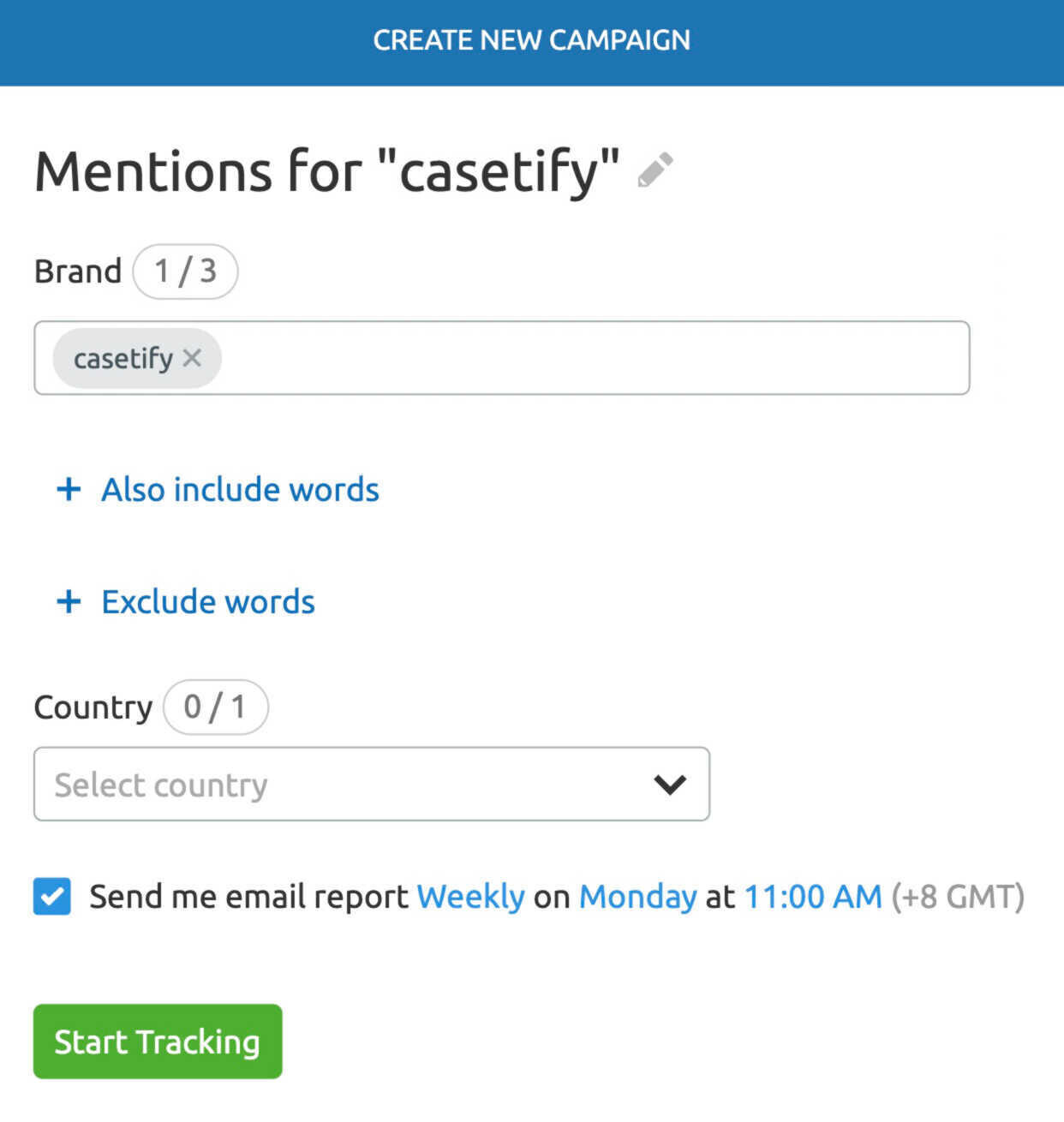
Once you click “Start Tracking,” you can keep tabs on any brand mentions within the campaign parameters you set.
To specifically find unlinked brand mentions, navigate to the filter that says “Link to website” and select “No link.”

This way, you can find and reach out to the webmasters, journalists, or bloggers who mentioned your brand and ask them to add a link.
To maximize your chances of earning a high-quality link, you need to be able to showcase how the link adds value. In other words, you need to tell them how adding your link will benefit them.
You can use this template as a base for reaching out, which you can do and manage through the Link Building Tool.
Click “Send to Link Building Tool” at the top right of your results.
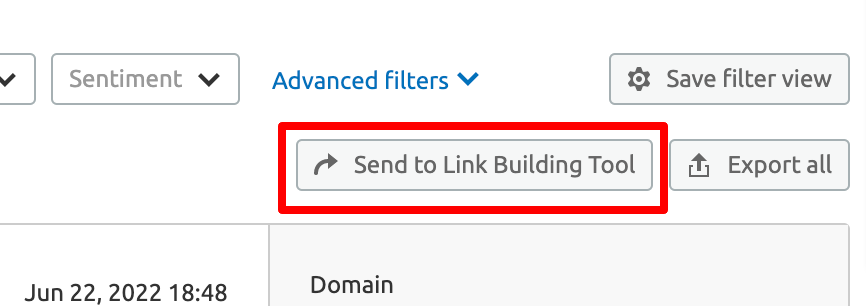
You’ll be directed to the tool, where you can connect your email and use a template like this one to reach out:
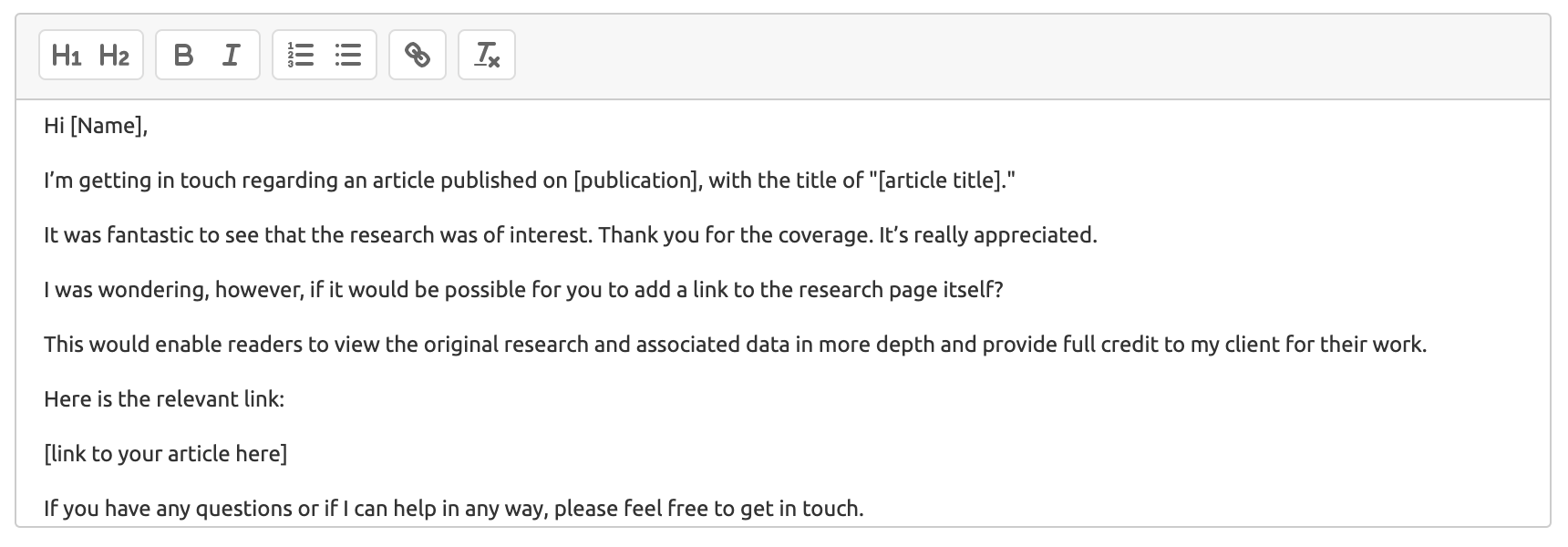
5. Supplier Links
If you sell other people's products, you could be sitting on an excellent opportunity to earn authoritative backlinks to your site.
Many manufacturers and suppliers have “where to buy” pages on their websites, like this example from a bicycle manufacturer.
Each one of these is a store that sells that specific brand of bike. The supplier is happy to link to these shops from its website because it draws attention to their product (win-win):

This link-building tactic is simple.
First, pull together a list of all of your suppliers.
Then, visit each website to find out which ones have pages linking out to their retailers.
Look for a button or link called something like “retailers” or “dealers”:

Find a page where your site isn’t listed?
Reach out to your contacts at the company and ask how to get your website listed and linked.
6. Business Association Links
If you’re a member of a business association, you may have an easy opportunity to earn a backlink.
Business associations are organizations that bring together businesses, usually in one area (like a local Chamber of Commerce group).
To start, either join a local business association or navigate to the website of the one you’re a part of.
Then look for a “members” page on their site. This page will typically be in the form of a member directory, like this example from the Long Beach Chamber of Commerce:
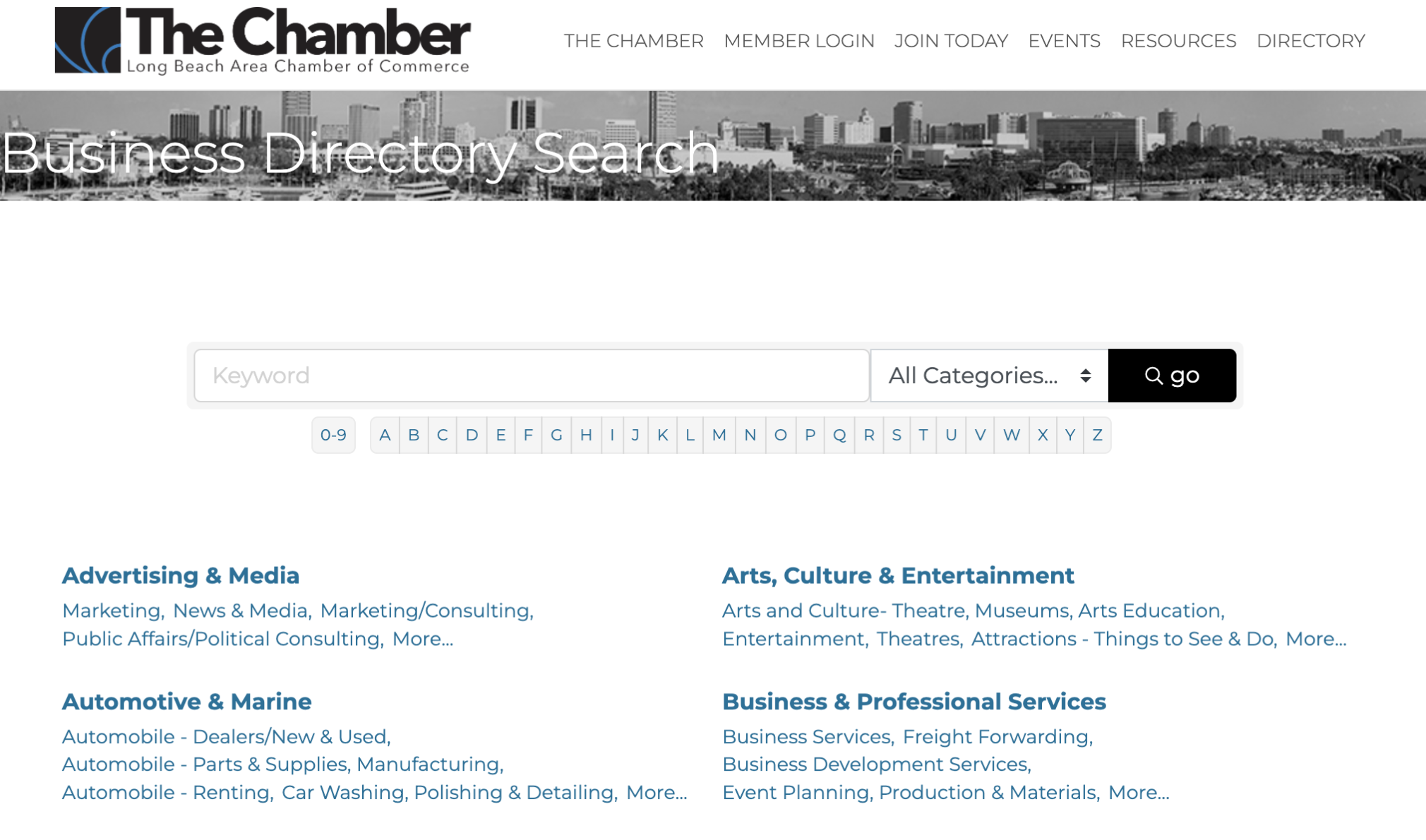
If you are a member but don’t see yourself listed, reach out and ask how to get added.
Here’s another example from the Downtown Naperville Business Directory for businesses in downtown Naperville, IL. It includes a directory that links to its members:

If you aren’t a member and think that you could benefit from what they offer, go ahead and become one. Then, chase that link.
7. Listicle Link Building
Listicles are articles presented as lists. They can vary depending on your industry and can cover topics like:
Best restaurants in [city] Top 10 [products] 20 ways to do [action]Here’s how the search results look like for “best vegetarian recipes”—all listicles:
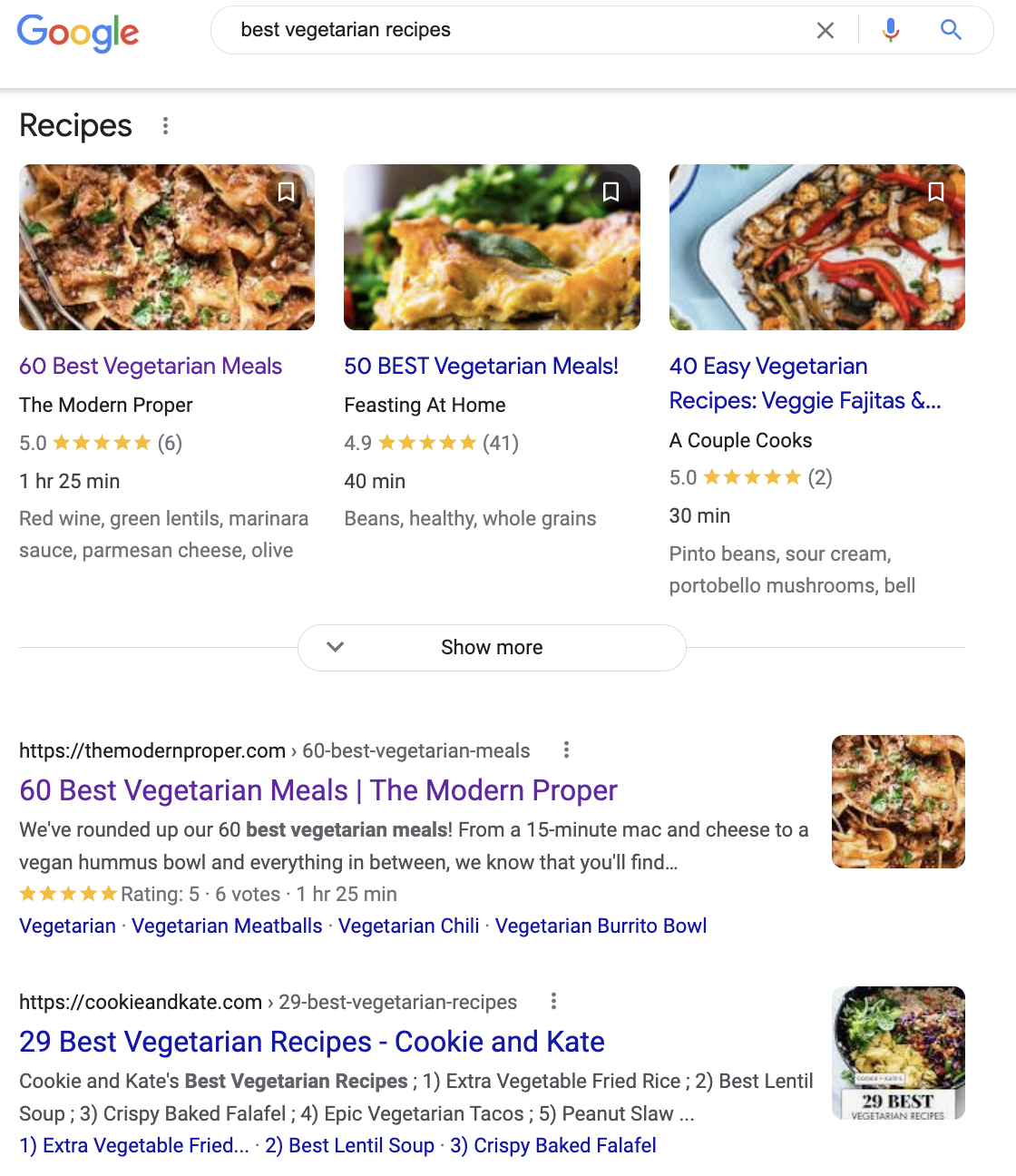
But the key is to find listicles that don’t include your site. Here’s how to find these pages so you can reach out and pitch your business:
If you own a local business, try searching for “things to do in [your city],” “best restaurants in [your city],” etc.
You can also use Google search operators—commands to further specify your search—to identify listicles in your industry that exclude your site.
Use the minus sign (-) to exclude phrases you don’t want to appear in your search. In this case, it would be the name of your business.
Let’s say you own Quartino Ristorante, an Italian restaurant in Chicago.
If you wanted to find listicles that didn’t (yet) include your business, you could search the following on Google: “best restaurants in chicago -quartino ristorante”
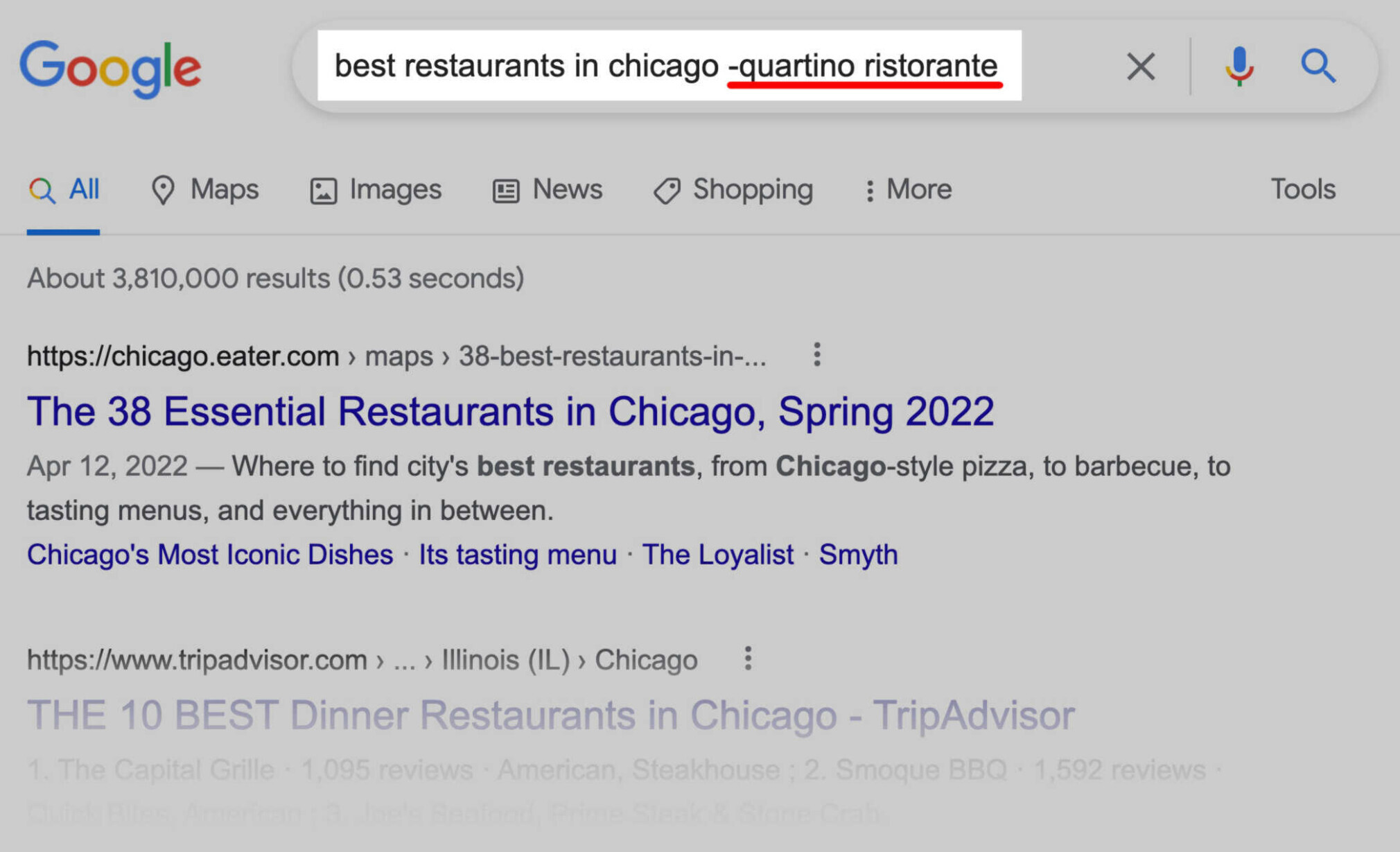
None of the results here contain the phrase “Quartino’s Ristorante.”
Take a look at the page one results and make a note of any listicles you’d like to feature your site.
Pro tip: You can also use our Surround Sound tool to find this data. Enter your keywords and you'll find out where your brand should be mentioned, but isn't.
Let’s say we’d like the position one page from Eater Chicago to feature our hypothetical restaurant.
Do some digging to find the best way to reach out to the site owner. In this case, Eater Chicago has a contact page where you can specify why you’re reaching out:
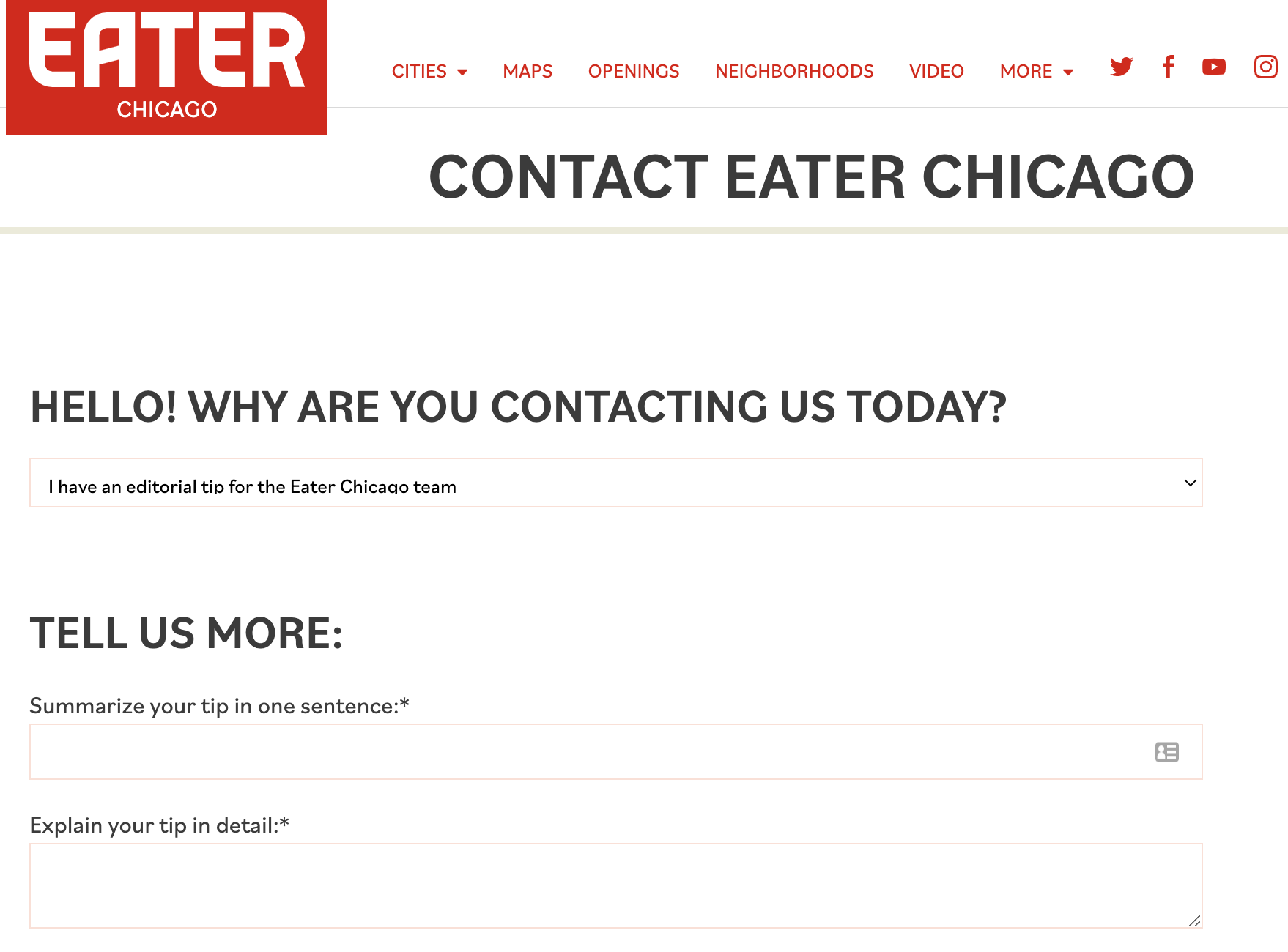
You can also click the social media links in their navigation bar if you think you’d have better luck messaging them there.

Eater Chicago has a pretty large following, so it may not be a foolproof method, but it can be a good chance to reach out in a more personal way.
Not exactly sure how to craft your pitch? Read our guide on email outreach to learn tips on pitching to earn backlinks.
8. Link Gap Analysis
One of the quickest ways to find backlink opportunities is to conduct a link gap analysis.
This allows you to find sites that link to your competitors, but not to you (yet). You’ll have the chance to earn the same quality backlinks that your competitors have—or even edge them out.
If a website has linked out to more than one of your competitors, there is a very good chance that they will also link out to yours.
As long as you can justify why they should do so, of course.
You can use the Backlink Gap tool to make this process much easier.
Start by entering your domain and up to four competitors.

You can enter up to five domains total. Once you enter them, click “Find prospects” and you’ll be able to see the domains (and pages) linking to one or more of your competitors.
Here’s what the main screen will look like:
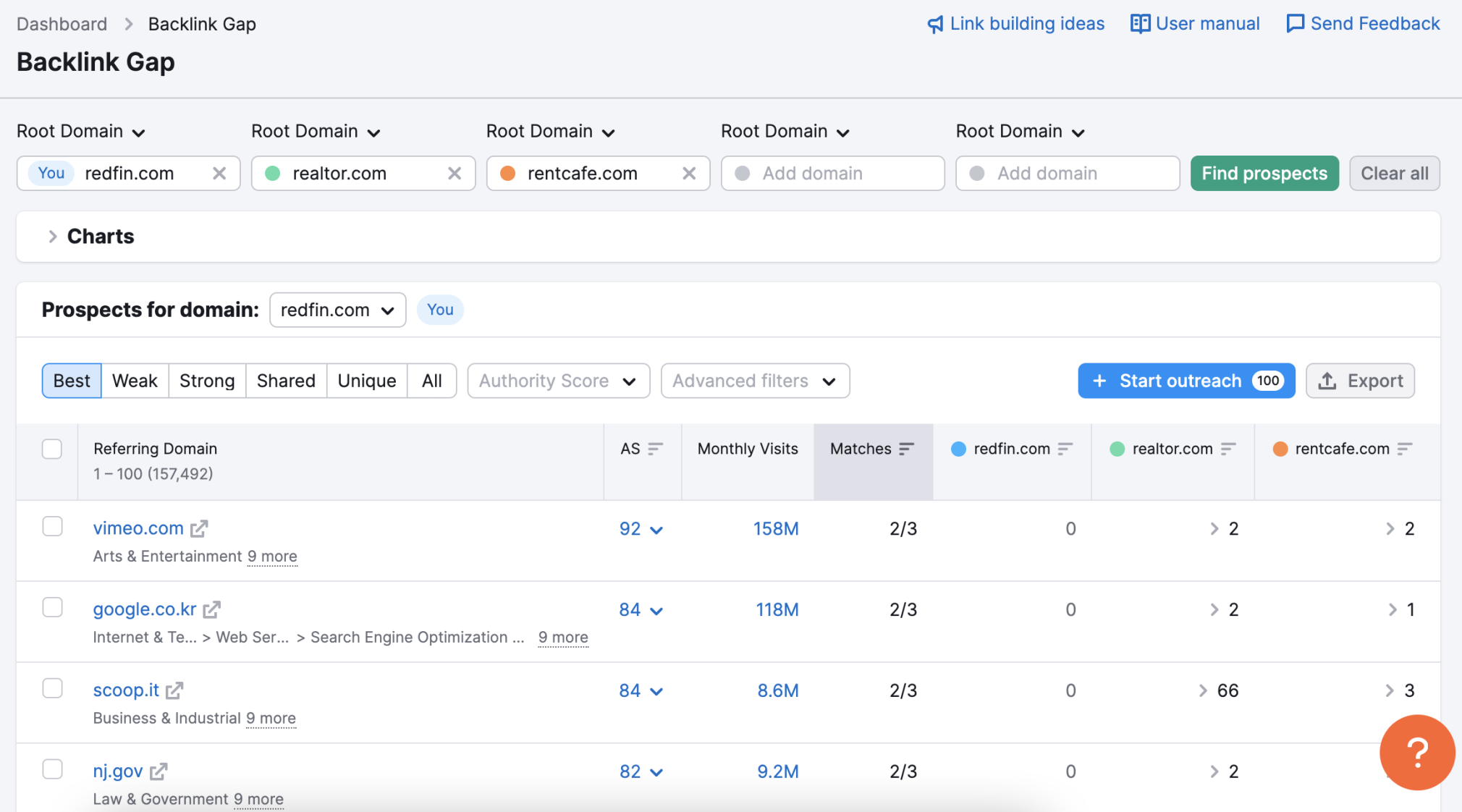
On the left-hand side, you can see which referring domains link to the domains you chose to review.
To find out exactly which pages are linking to your competitors’ sites, click the arrow symbol next to the number in the competitor’s column:

If you click on this arrow in the realtor.com column, you can see links to the two pages from nj.gov that link to them, the authority score of those pages, and more.
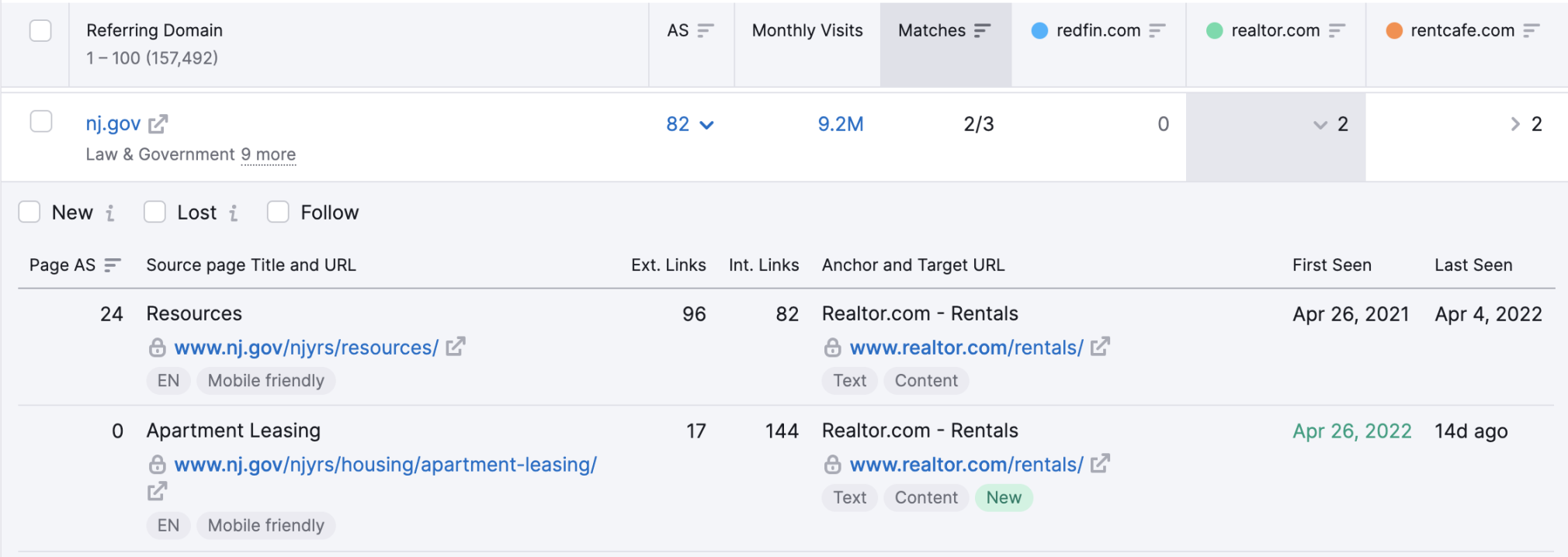
Not every page will be a perfect match since you may find some spammy backlinks. So take the time to visit the pages that provide your competitors with backlinks to see if they are worth pursuing.
Once you find a page that you’d like to link to your site, you can begin outreach straight from the Backlink Gap tool.
Click the “+ Start outreach” button toward the top of the page.

This will open a window that allows you to send prospects directly to the Link Building tool, where you can manage outreach and send emails without leaving Semrush.
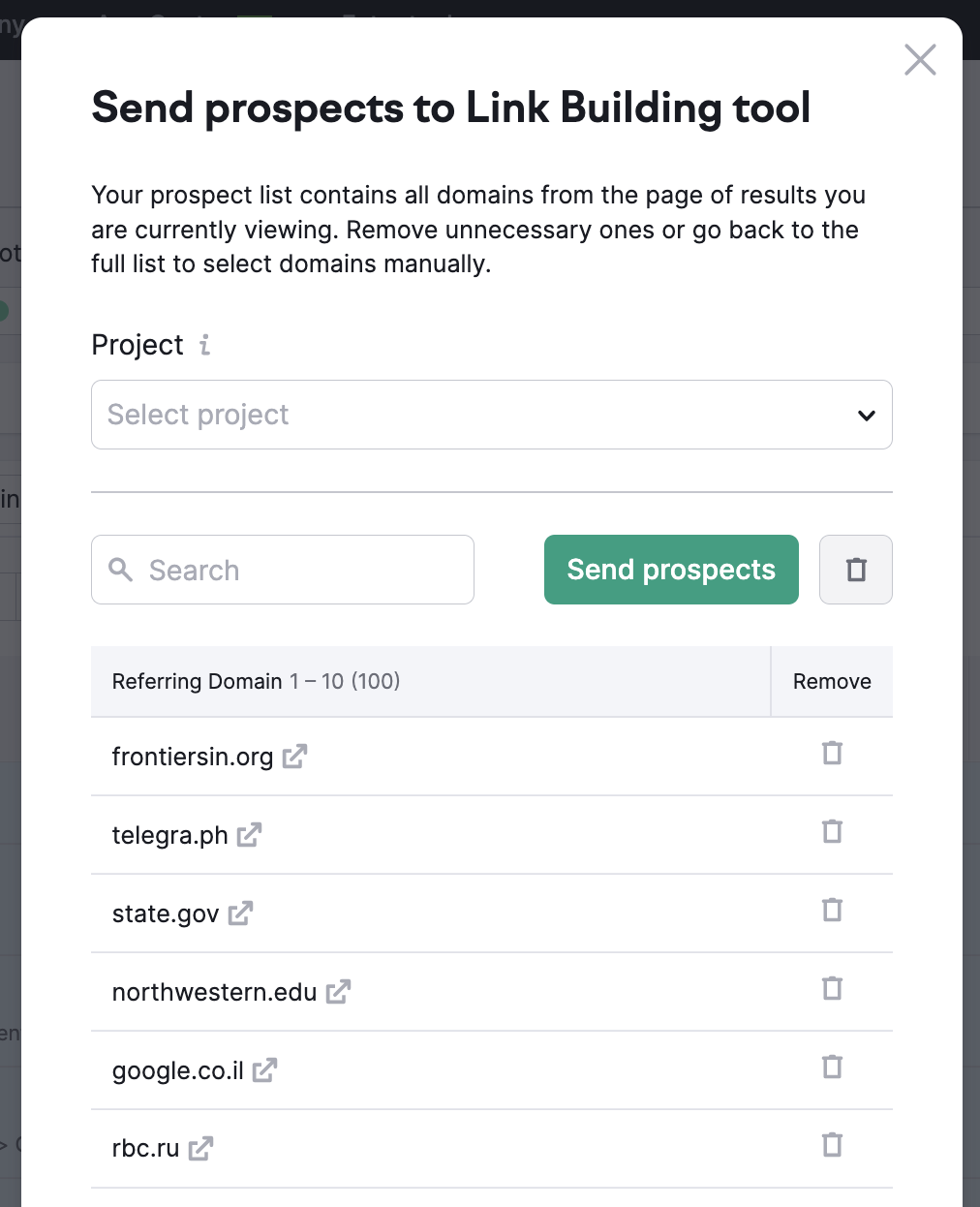
9. The Skyscraper Technique
The Skyscraper Technique is a link building tactic that follows a proven process:
Find successful content that has earned lots of links Create better content Promote that content to those who linked to the original pieceWhy does the Skyscraper Technique work?
People are naturally attracted to the best of the best.
So the goal is to become the tallest “skyscraper” in your space. Your content should be so good that people will want to link to it over other options.
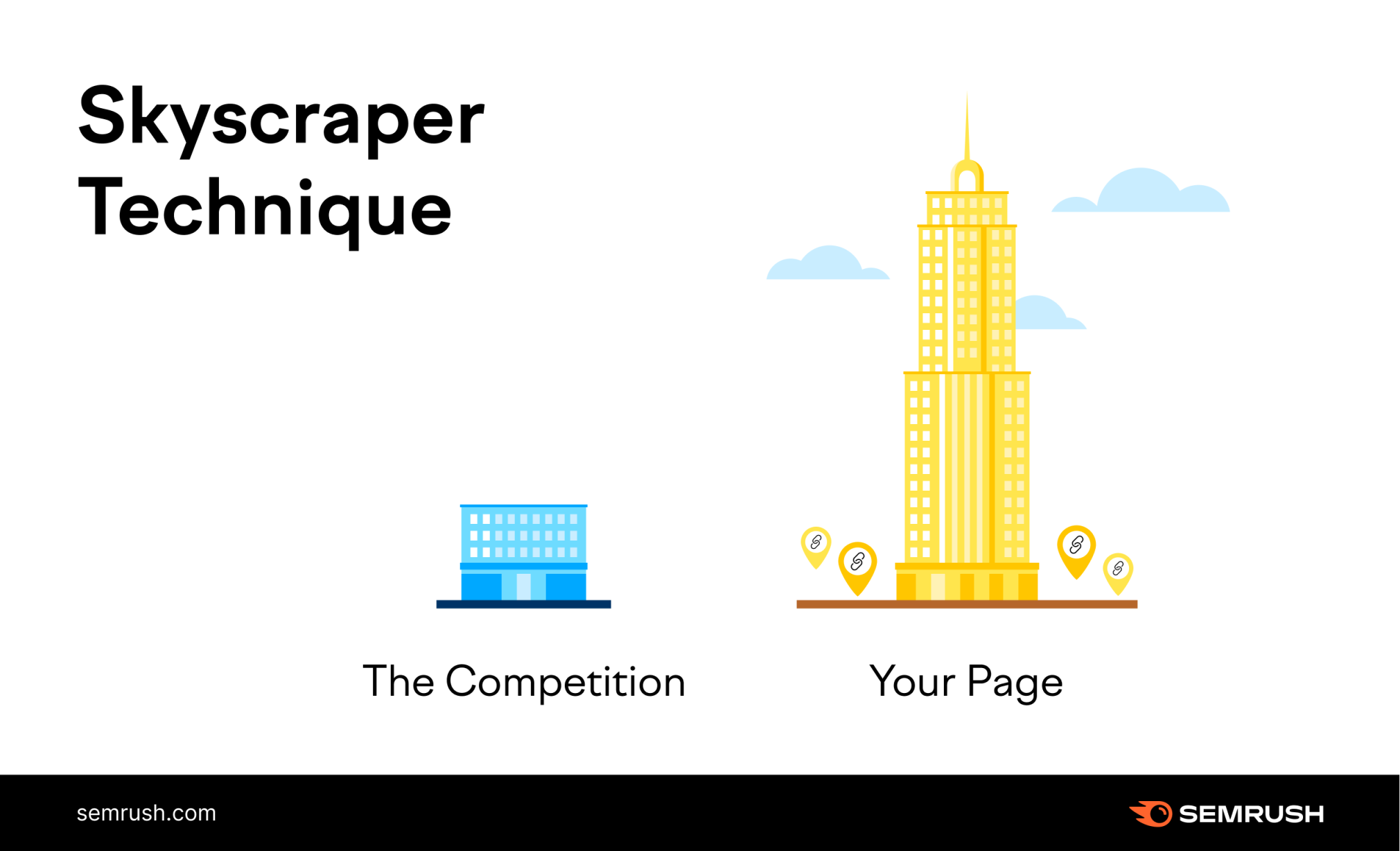
To perfect the Skyscraper Technique, create the best piece of content on the web for your chosen topic. Go all-in on things like:
Length Depth VisualsLet’s dive into a few examples that follow the Skyscraper Technique. We’ll start with this comprehensive list of SEO tools from Backlinko:

You’ll have a hard time finding a longer list of SEO tool reviews than this one (hence why it’s so linkable).
It also includes a filterable table of contents so users can find exactly what they want within the list.
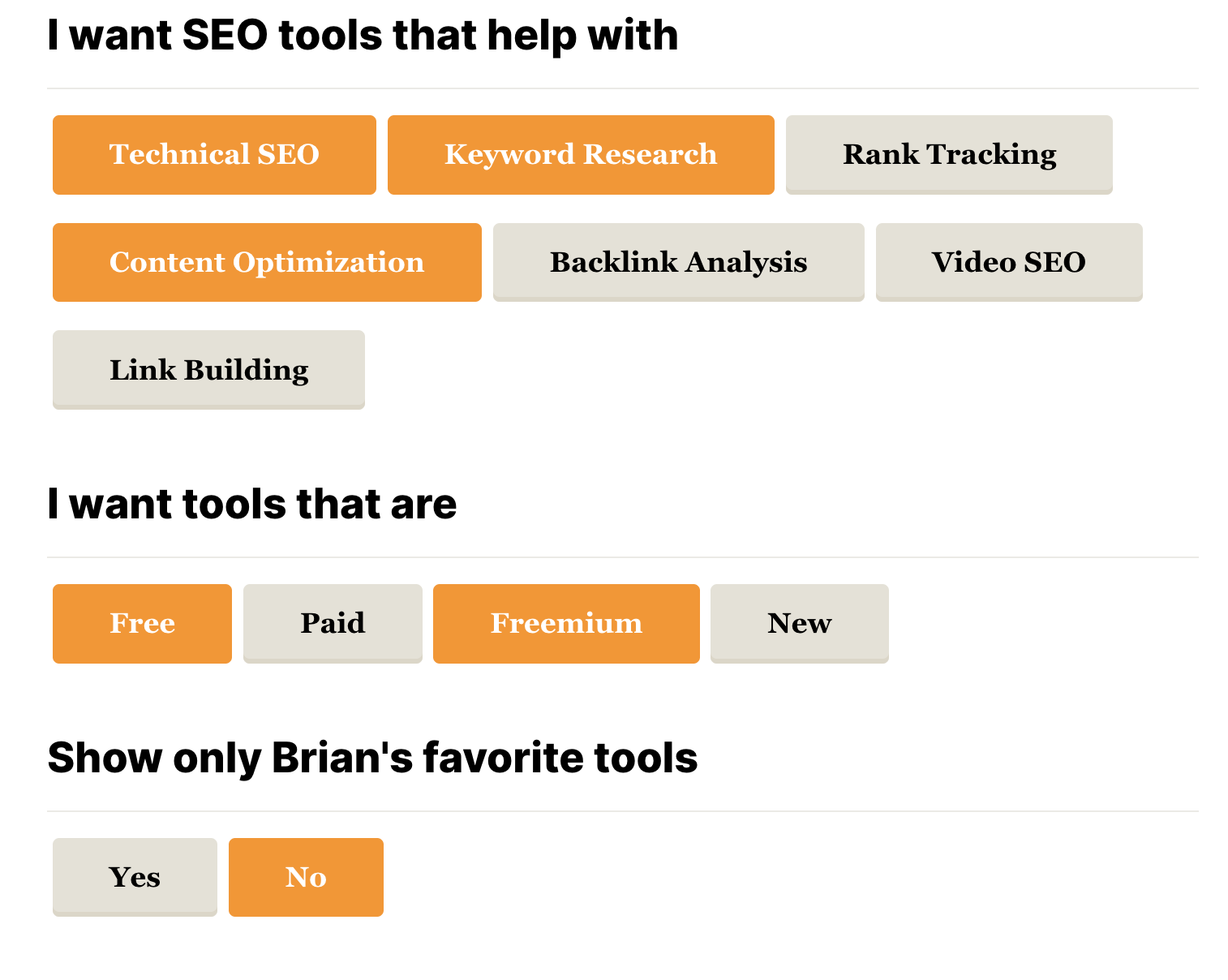
While more isn’t necessarily better, it can be if all the content is useful and covers all aspects of the topic.
Here’s another example from Hubspot. It covers 25 “About Us” page examples, templates, and a downloadable guide for users who want even more information.

The page itself provides plenty of examples and visuals, but they go one step further with long-form downloadable content.
Ready to try out the Skyscraper Technique yourself? Start with competitor research.
Your goal is to find popular sites within your niche and find out which of their pages get the most backlinks.
You can use Backlink Analytics to research a competitor within your niche. Let’s use Crate and Barrel as an example.
Head to the “Backlinks” report as seen below.
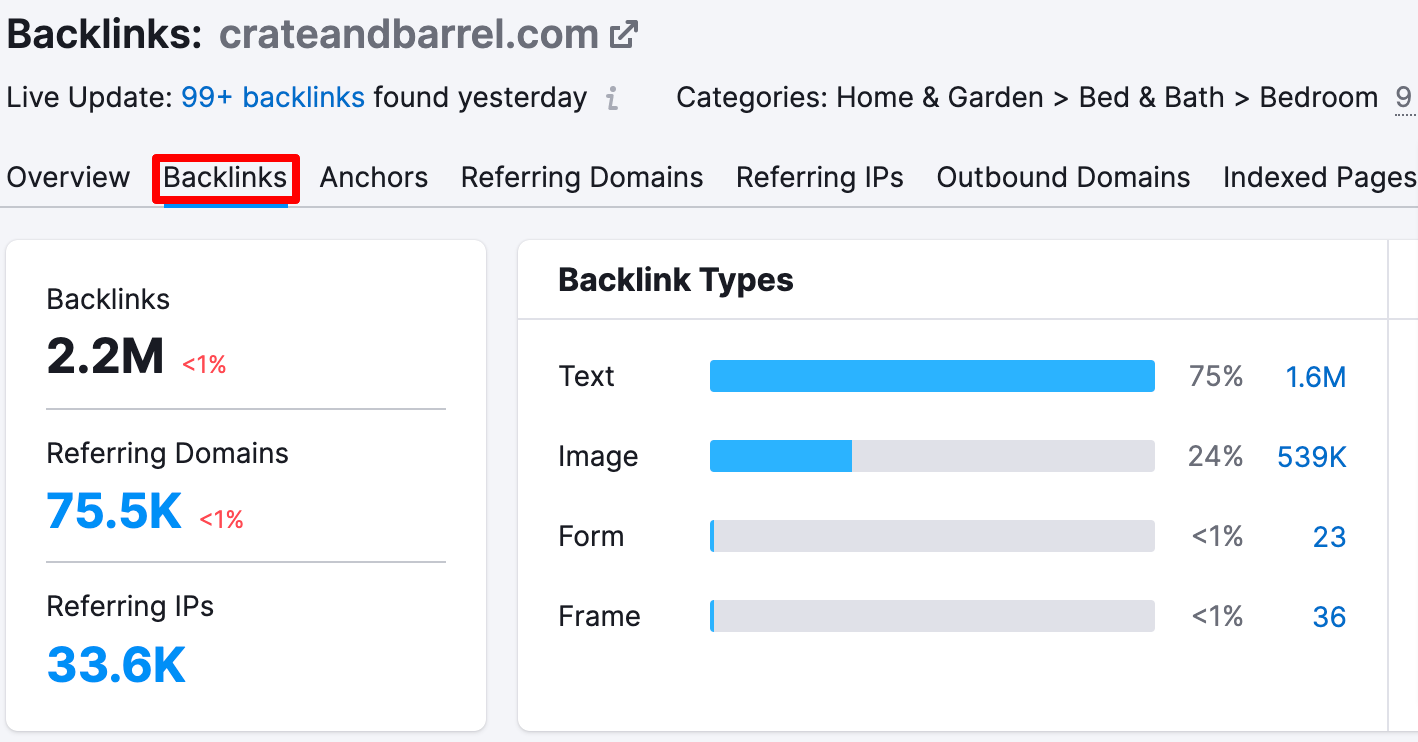
Scroll down to see where they are getting backlinks, the Authority Scores of those pages, and more.
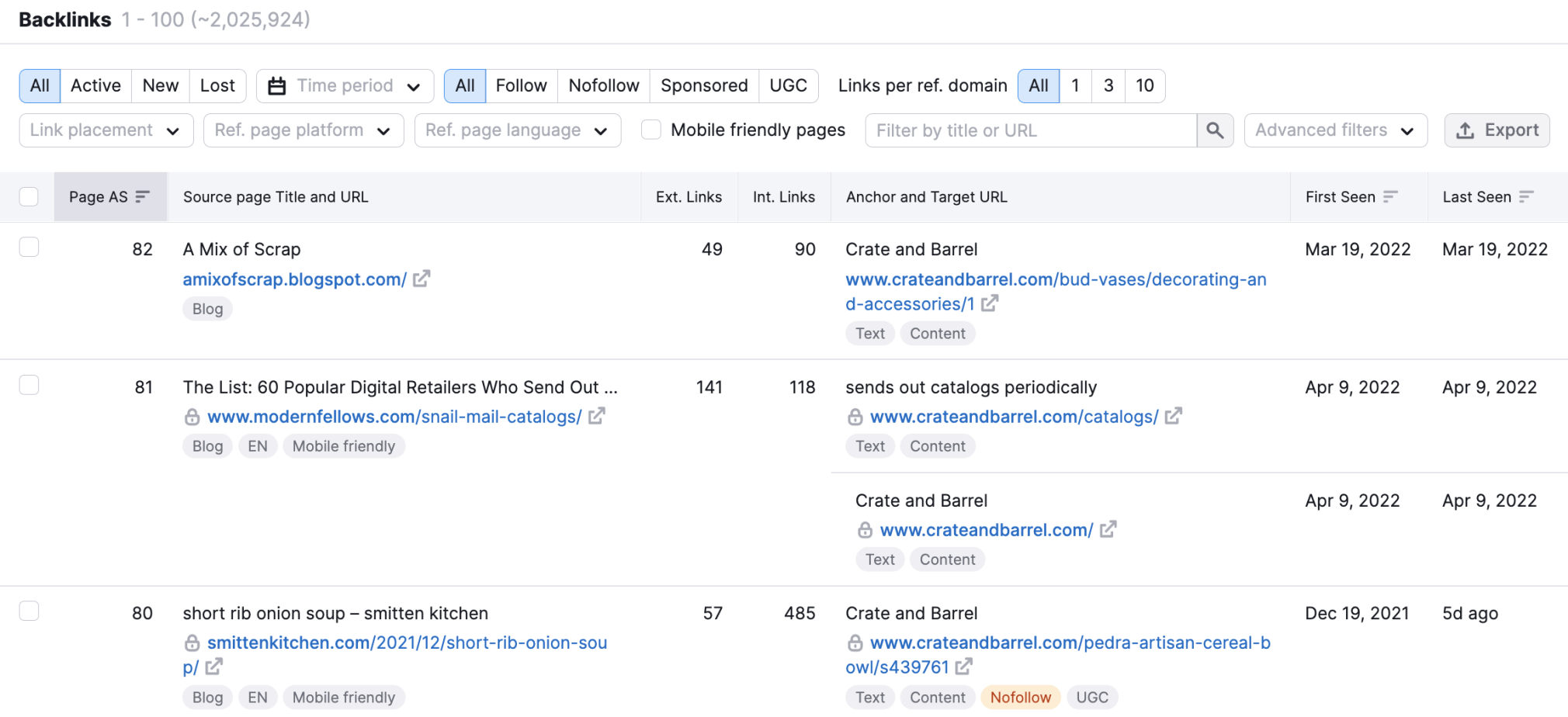
Specifically, look at:
1. What pages are getting the most links?
2. What do they have in common?
You can also perform this step in Google if you want to start your research by topic.
Search for a topic within your niche that you’d like to pursue. Then, take a look at the pages that rank on page one.
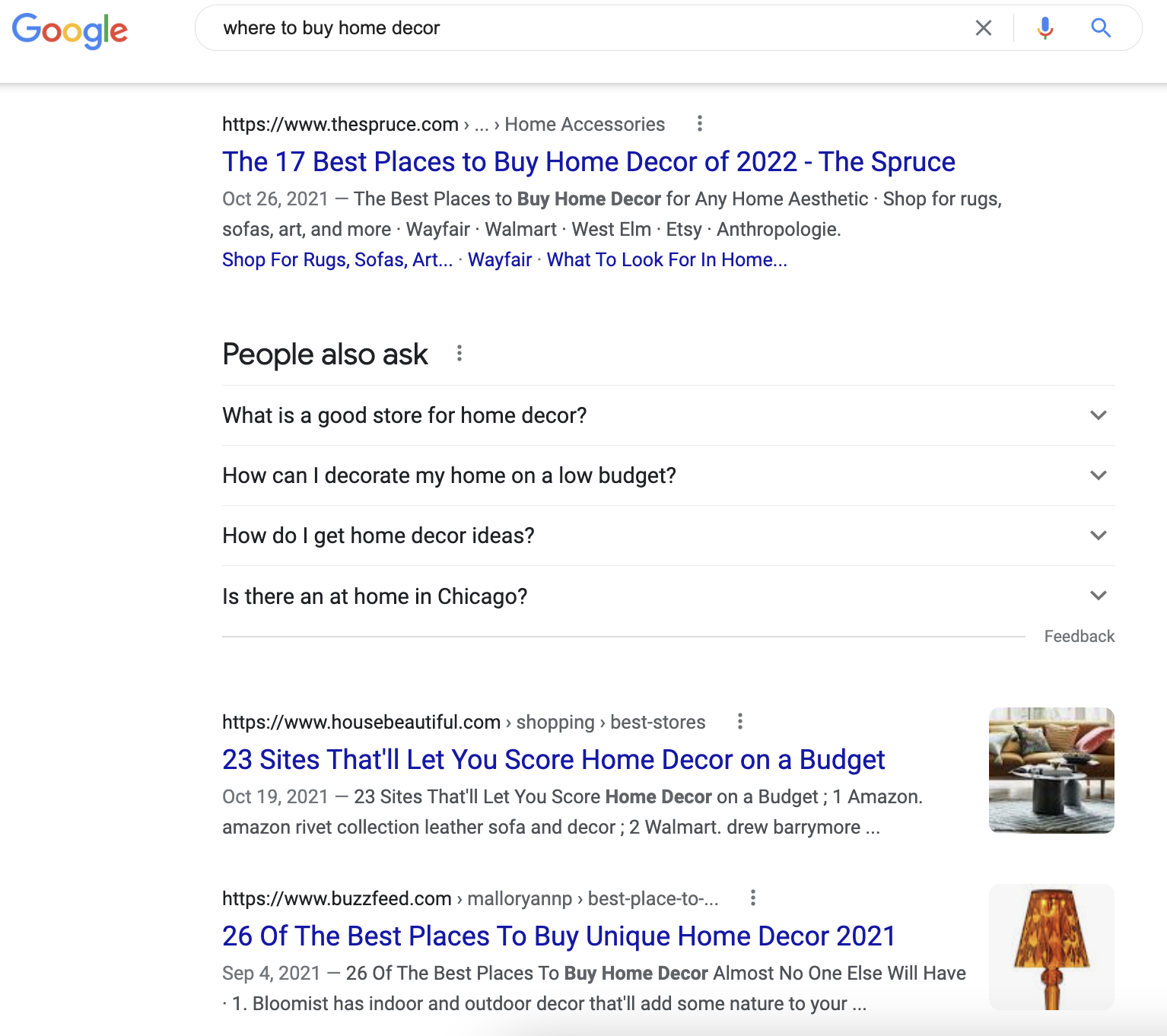
For further details, enter individual pages into Backlink Analytics the same way we did for Crate and Barrel above:
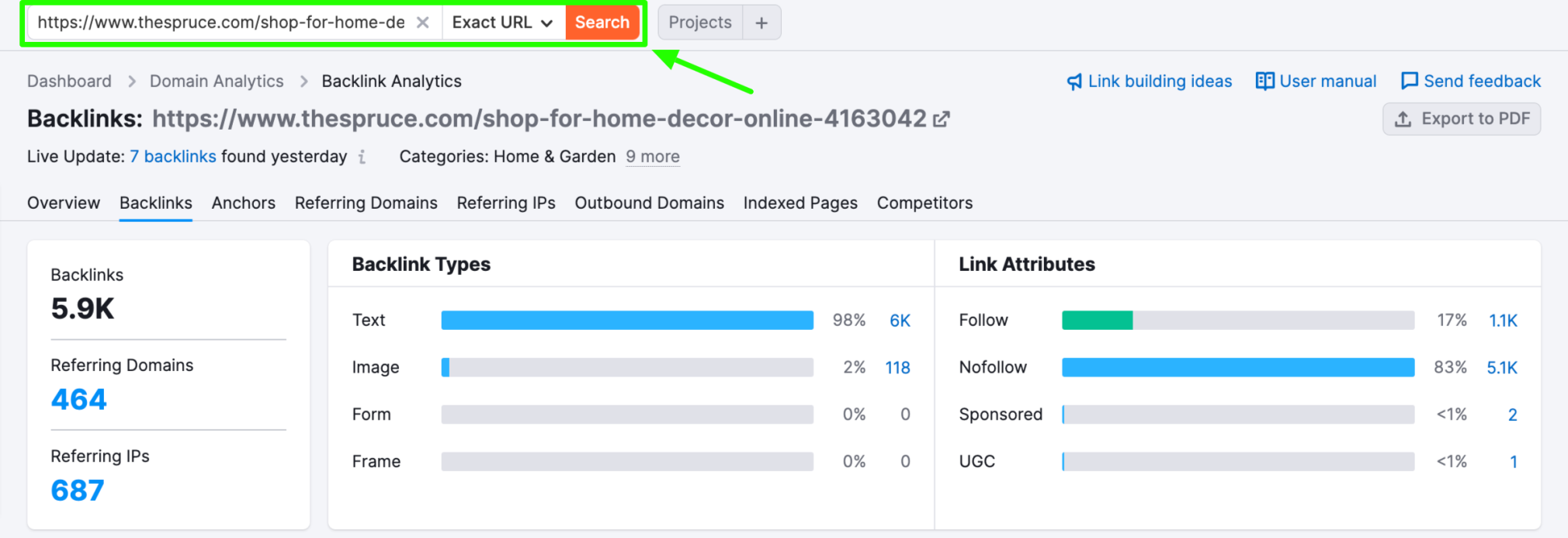
Be sure to research more than just traffic and backlinks. Editorially review the pages to take note of content, graphics, etc. that you can make even better on your own page.
Once you’ve gathered enough information, create your own piece to compete with the pages you found in your research.
Keep in mind that you shouldn’t simply take a piece that’s performing well and reword/add more images—that probably won’t work very well. Add your own spin to the topic via the angle, structure, visuals, etc.
While writing (or updating) a page using the Skyscraper Technique, your goal should be to make your page:
More comprehensive More up-to-date Better designed Better organizedNow that you’ve updated your page, look for prospects who may be interested in linking to it.
The key is to reach out to people who already link to similar content. You’ll offer them a better, more comprehensive option to link to.
To find people to reach out to, head back to Backlink Analytics and plug in a page you want to compete with.
Navigate to the Backlinks report again and see what pages link to the competition.
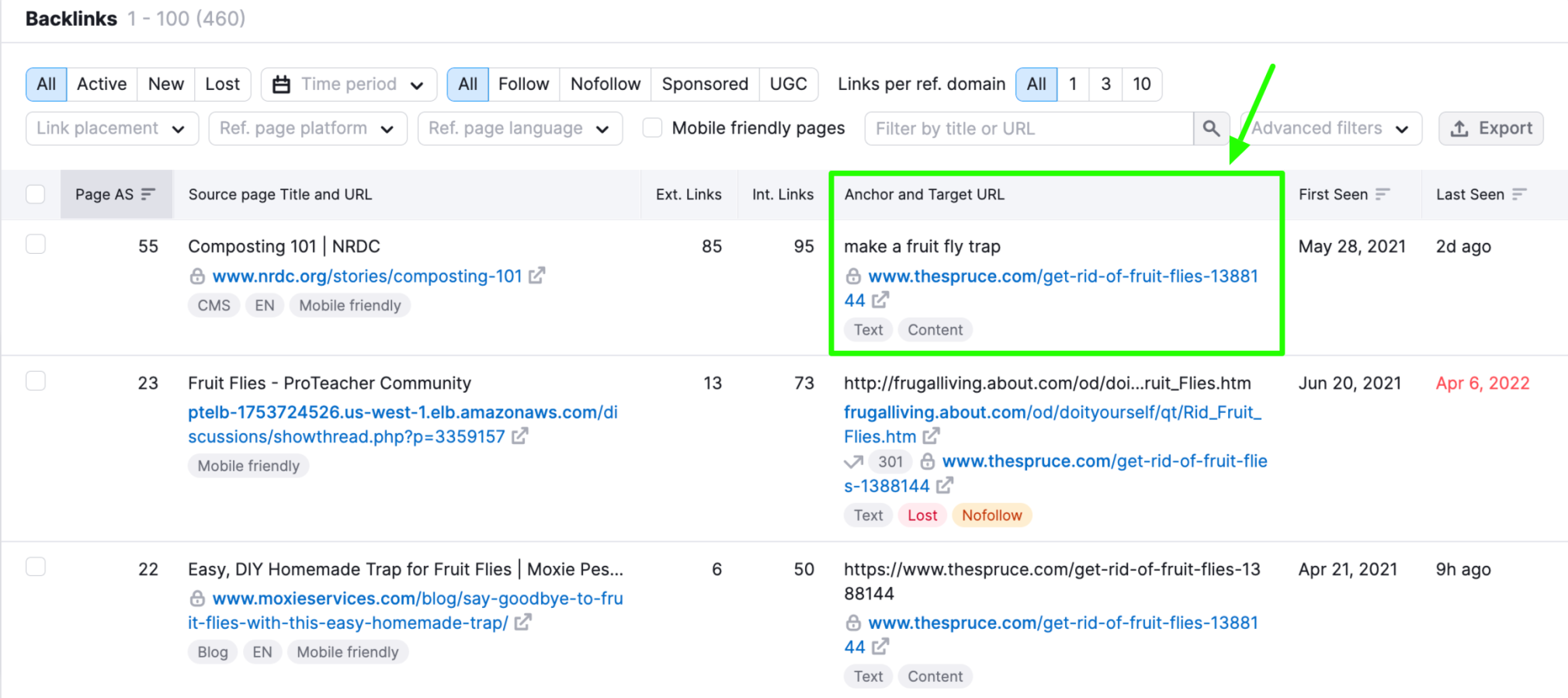
As highlighted above, you can see exactly what pages link to your competitor’s page and what anchor text is used.
Repeat this step until you have a list of potential link building prospects. This is an ongoing process, though, so you can always go back and add more.
Here’s a template you can use when you reach out:
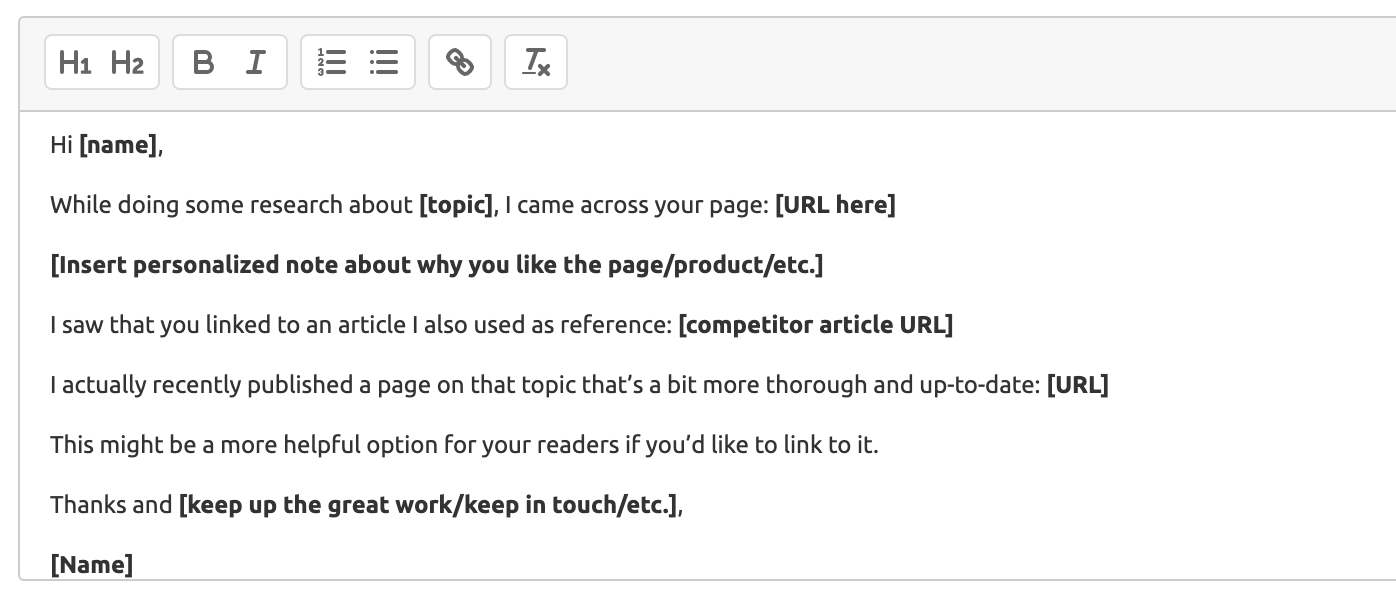
Keep in mind that the idea is quality over quantity here. So while you may only end up getting 10 or 15 links, this can actually make a huge impact if they are from relevant, authoritative sites.
Ideally, if you’ve put in the work and have created a solid page, it should be a no-brainer for others to link to your page.
10. Help a Reporter Out
If you’ve never come across HARO before, you’re missing out on some great opportunities to earn links from the press.
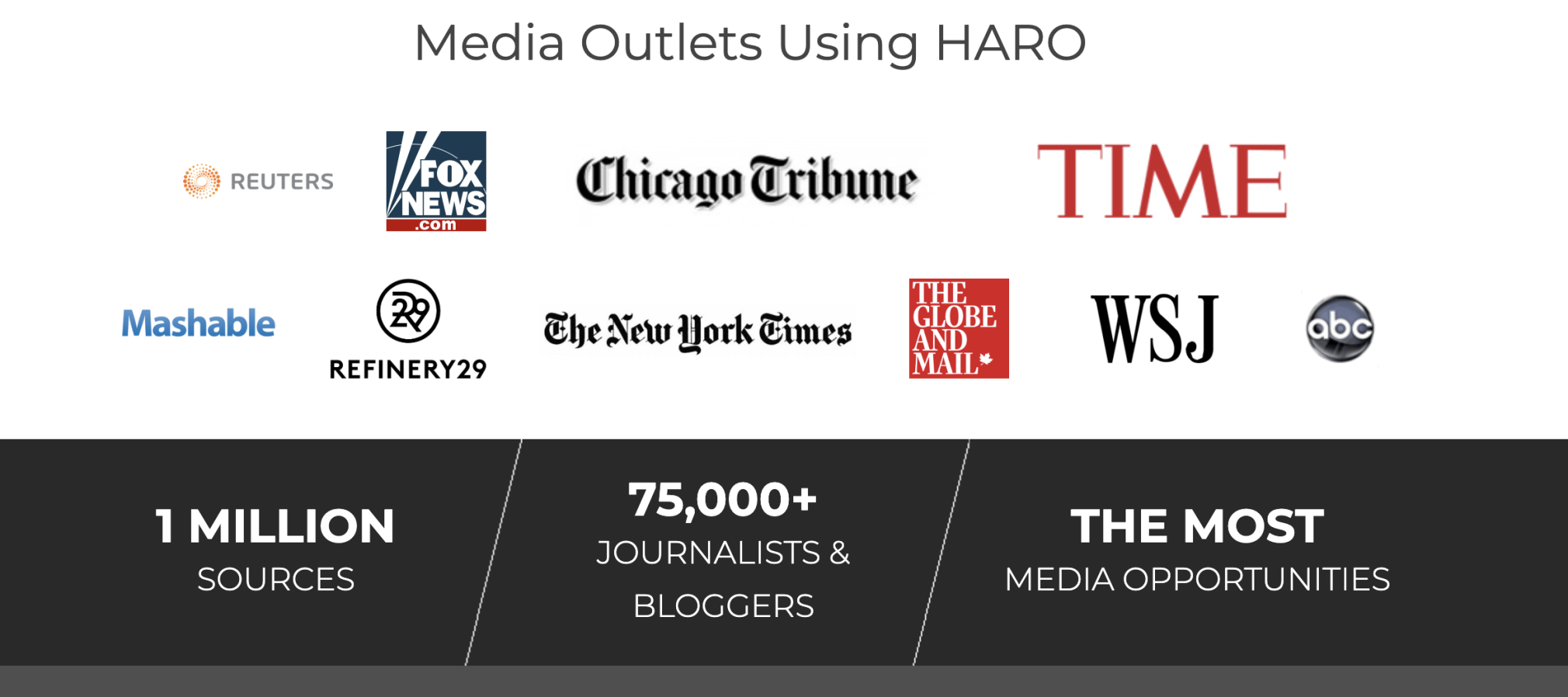
HARO, or Help a Reporter Out, connects journalists with sources. If a journalist chooses to use your content as a source, they may also give you a backlink.
Here’s how it works:
After signing up, you’ll receive emails three times each business day.
They will look something like this example from zestard.com:

In this case, the journalist is searching for tips on making a home look more elegant. They include requirements so sources know exactly what to send.
You can choose which industries to subscribe to as well. So if you signed up to get queries within the interior design industry, then you would have received this tip.
Visit the live page from Best Life Online and you’ll find a variety of tips with quotes attributed to various sources. A.k.a: backlinks.

The best part about this tactic is that you don’t need to do much legwork if you set up your HARO account correctly.
Respond to relevant emails with a link and any additional information from the journalist’s request.
Journalists across all industries need quotes and sources to back up their articles. In order to cite a source properly, they’ll need to call out where they got specific information.
So if you see a request that is relevant to what you do, go ahead and respond to it and you could become a source for an article (in other words, earn a backlink).
Be as comprehensive as possible and only reply to topics and requests that you are indeed an expert on.
You won’t be successful with every pitch, but choose your responses carefully, and it can be a great way to authoritative links.
11. Provide Testimonials
Customers often rely on testimonials and reviews to make purchasing decisions.
But did you know you can also leverage testimonials to earn backlinks?
Here’s how it works:
Write a blog post that highlights products or services you love. Then, notify the owners of the sites you mention.
They may link to your content or share it on social media.
Or, if a site has a space for users to leave reviews, that’s an easy and less time-consuming way to get started.
Here’s an example of Hubspot’s testimonials page. If you click the “learn more” buttons, you’ll be directed to the sites that gave Hubspot an award or shoutout:
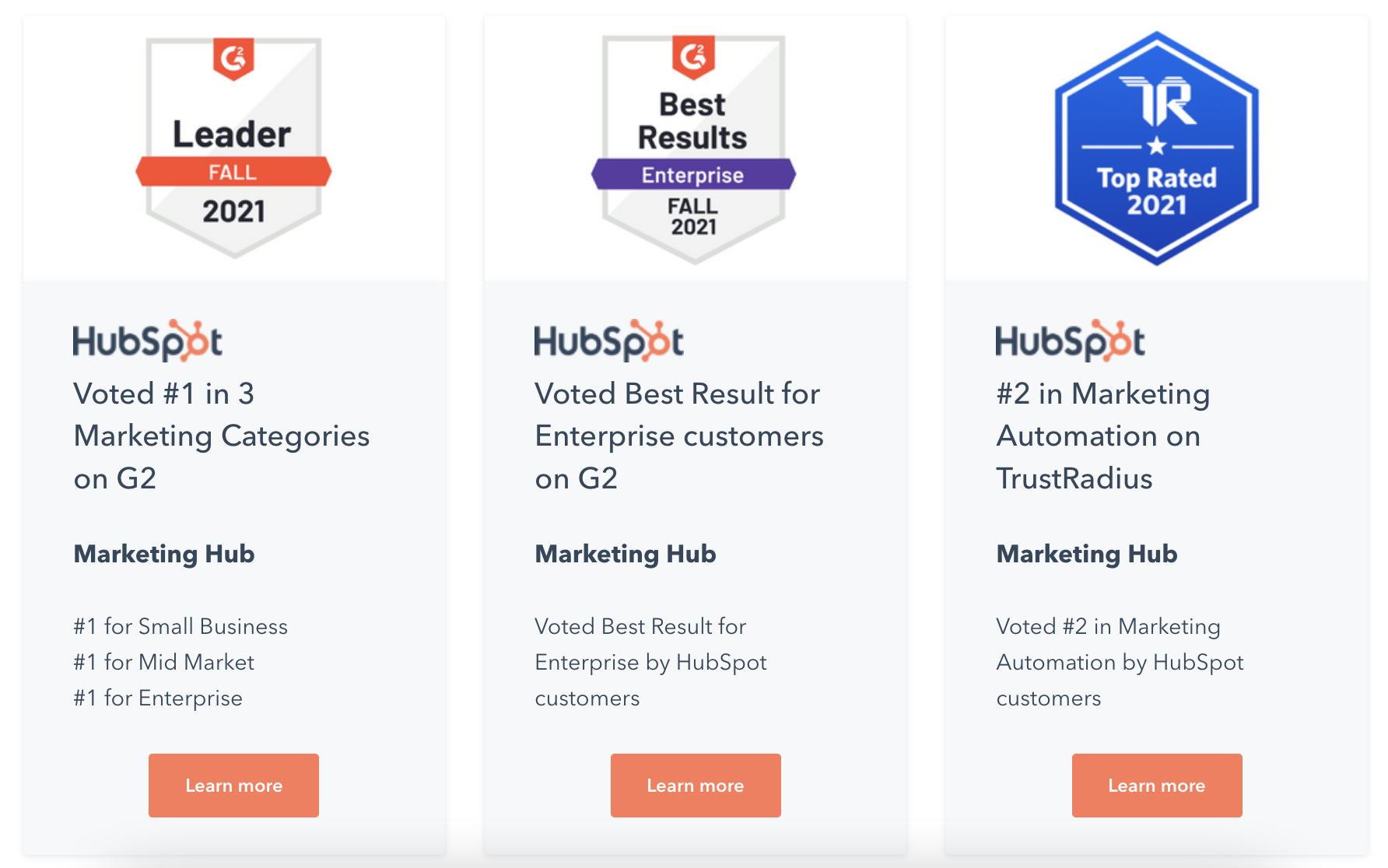
Semrush also has a Success Stories page where companies can email their testimonials:
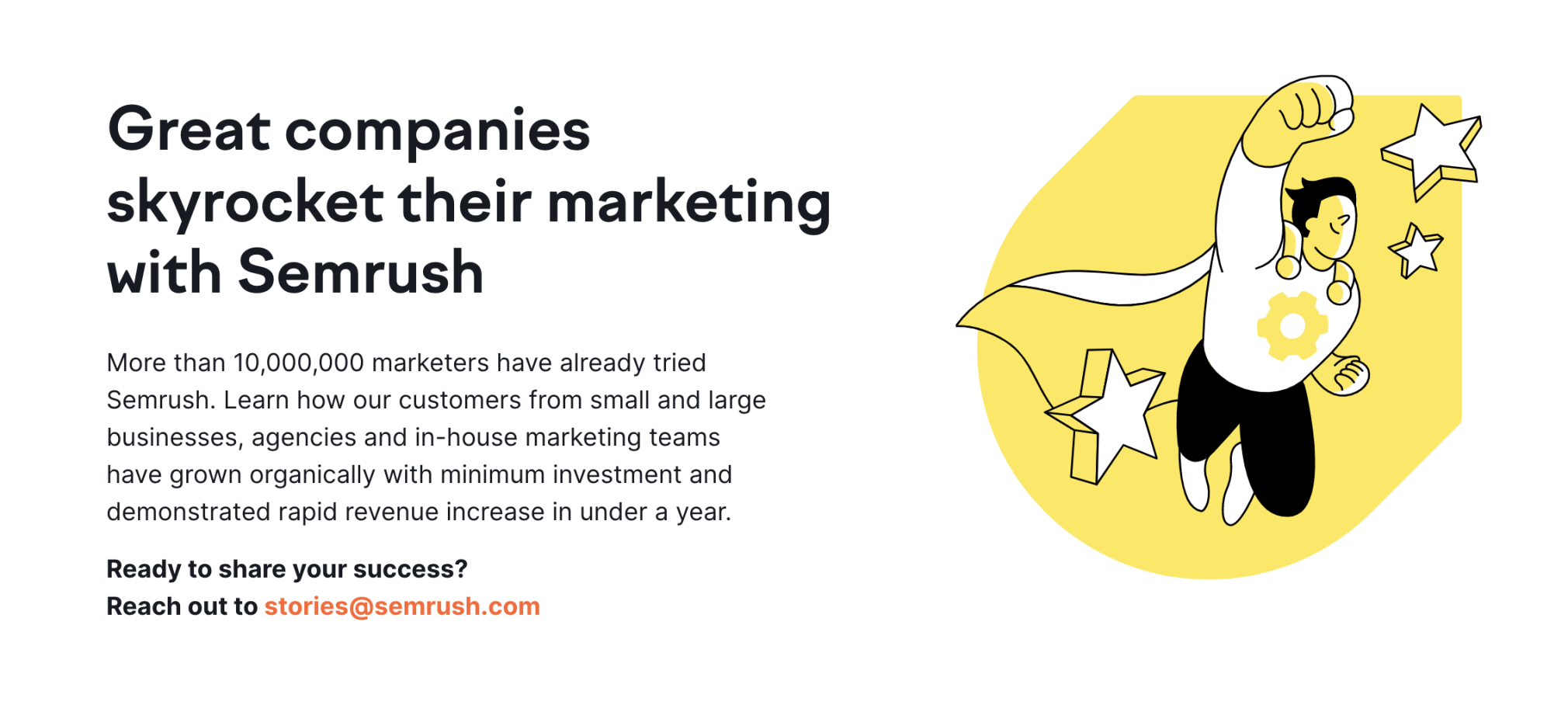
We’ve posted success stories for a wide range of Semrush users and link back to their sites from this page:
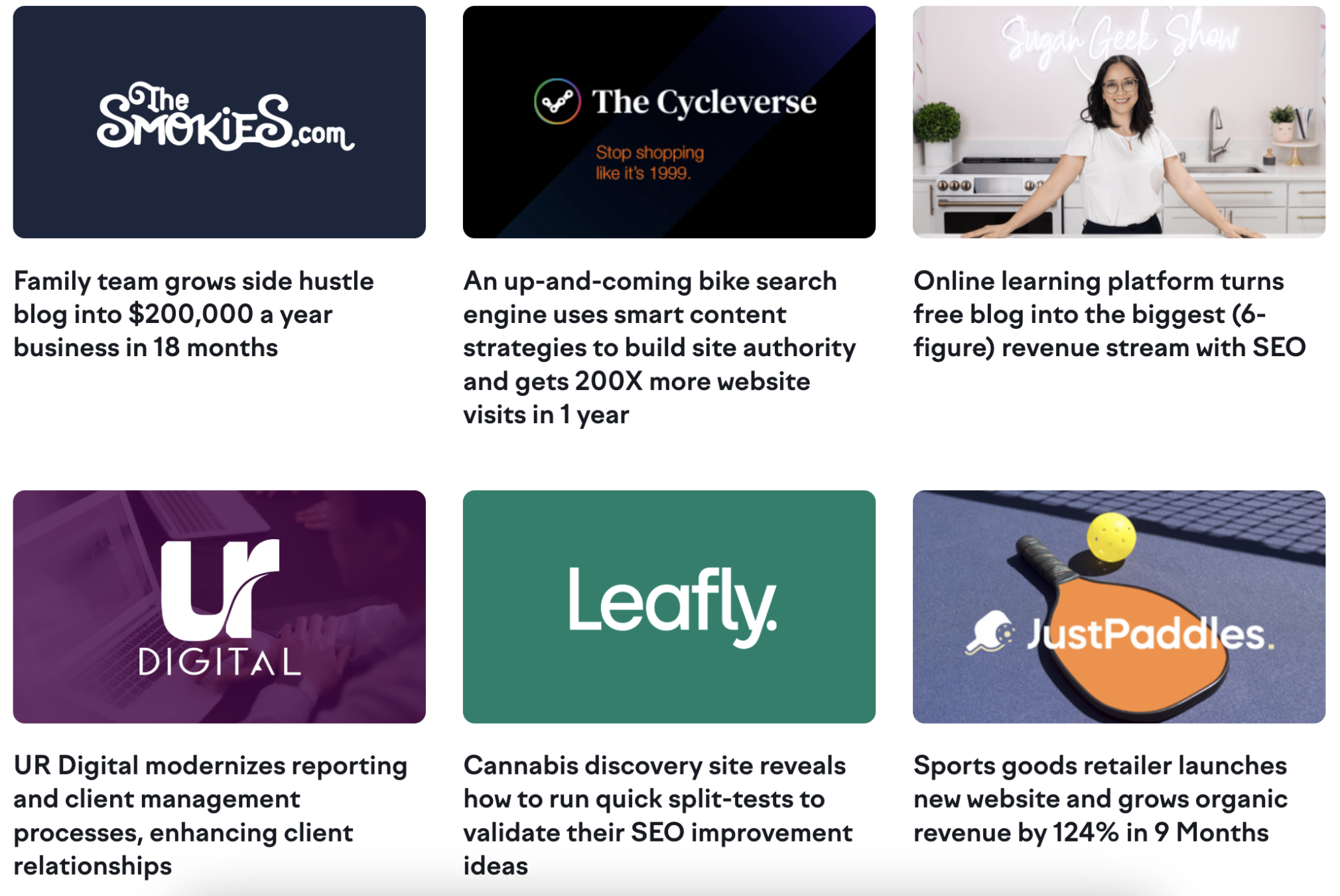
This process is a win-win: sites can send us their stories and receive a backlink if we feature them, and we can highlight some of the ways Semrush has helped businesses succeed.
Here’s how you can get started:
Begin by writing a testimonial or case study on your site that shouts out a tool/service/etc. (Of course, make sure it’s relevant to your industry and a tool you actually use.)
For example, we wrote a blog on some of our favorite free and paid SEO tools. We included over 50 tools we use and love and added a link to each of them.

Keep in mind that you shouldn’t create useless content in an attempt to get links. You’ll want to make sure that your content is valuable to your readers.
However, “free seo tools” has a search volume of 3,600.
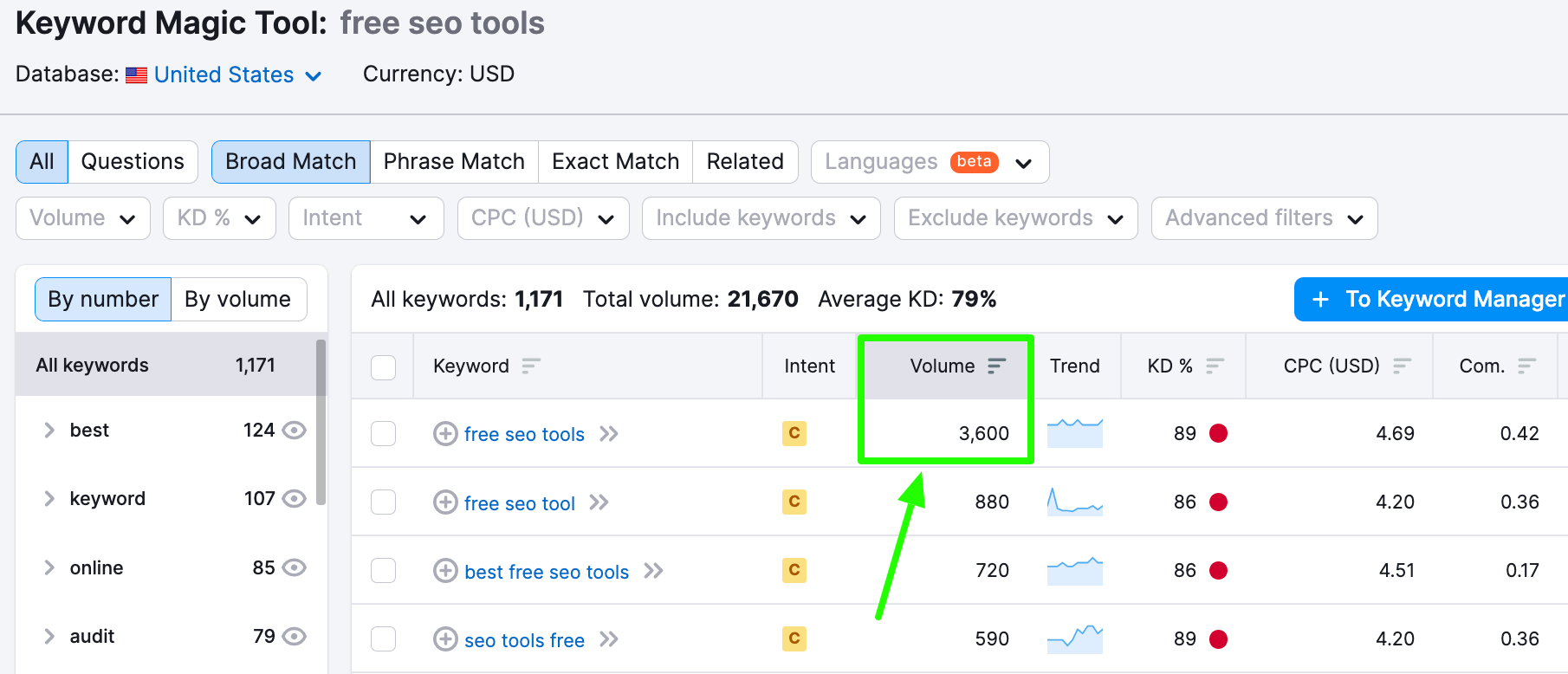
So in this case, we chose a keyword people in our industry were interested in. Then took the opportunity to provide some testimonials for tools we use and love.
As of writing, this page has a total of 5.1k backlinks from 421 referring domains.

After sharing an accompanying infographic on LinkedIn, we got over 2.7k reactions and 391 shares:
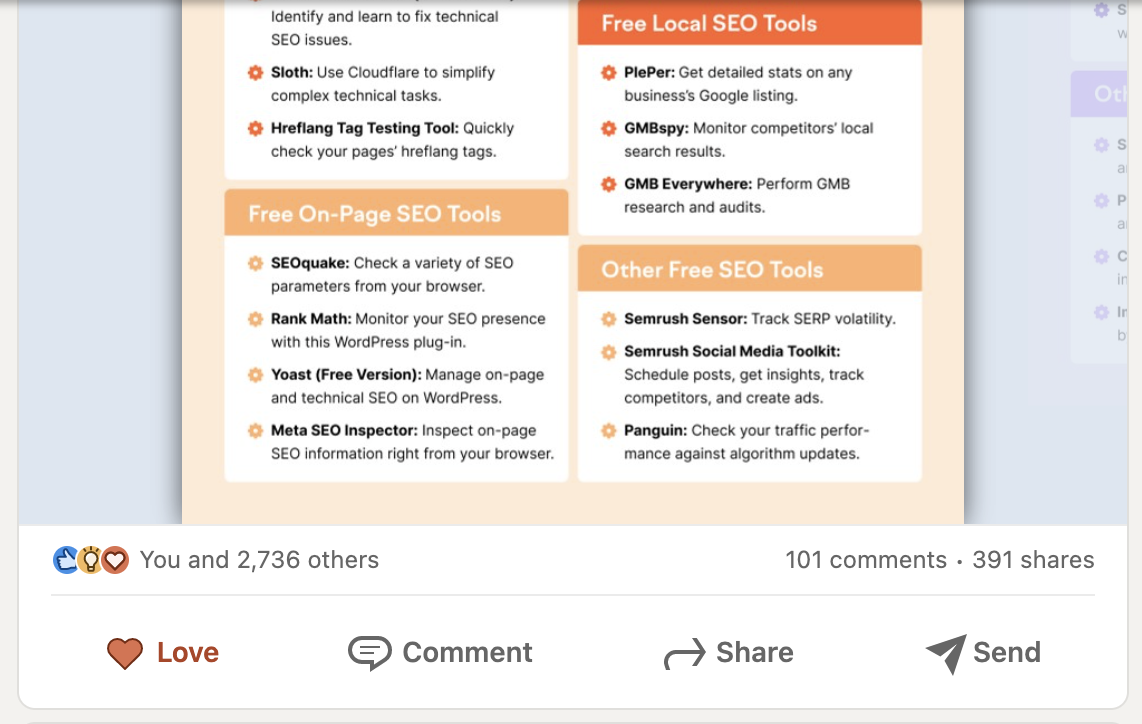
If you write a thorough, informative piece that also highlights tools you use and love, it can be mutually beneficial. The owners of the tools you mention may share, and it might resonate with others within your community or niche.
Final Thoughts
The right tactics for your link building strategy will depend on many factors, including how competitive your industry is and how authoritative your site is.
While there are many ways to build links, it’s a good idea to start by creating high-quality content. From there, you can start pitching specific pages and trying out different approaches.
Not every attempt will earn you a backlink, but it only takes a few quality links to make an impact.
Good luck and happy link building!
Innovative SEO services
SEO is a patience game; no secret there. We`ll work with you to develop a Search strategy focused on producing increased traffic rankings in as early as 3-months.
A proven Allinclusive. SEO services for measuring, executing, and optimizing for Search Engine success. We say what we do and do what we say.
Our company as Semrush Agency Partner has designed a search engine optimization service that is both ethical and result-driven. We use the latest tools, strategies, and trends to help you move up in the search engines for the right keywords to get noticed by the right audience.
Today, you can schedule a Discovery call with us about your company needs.
Source:





